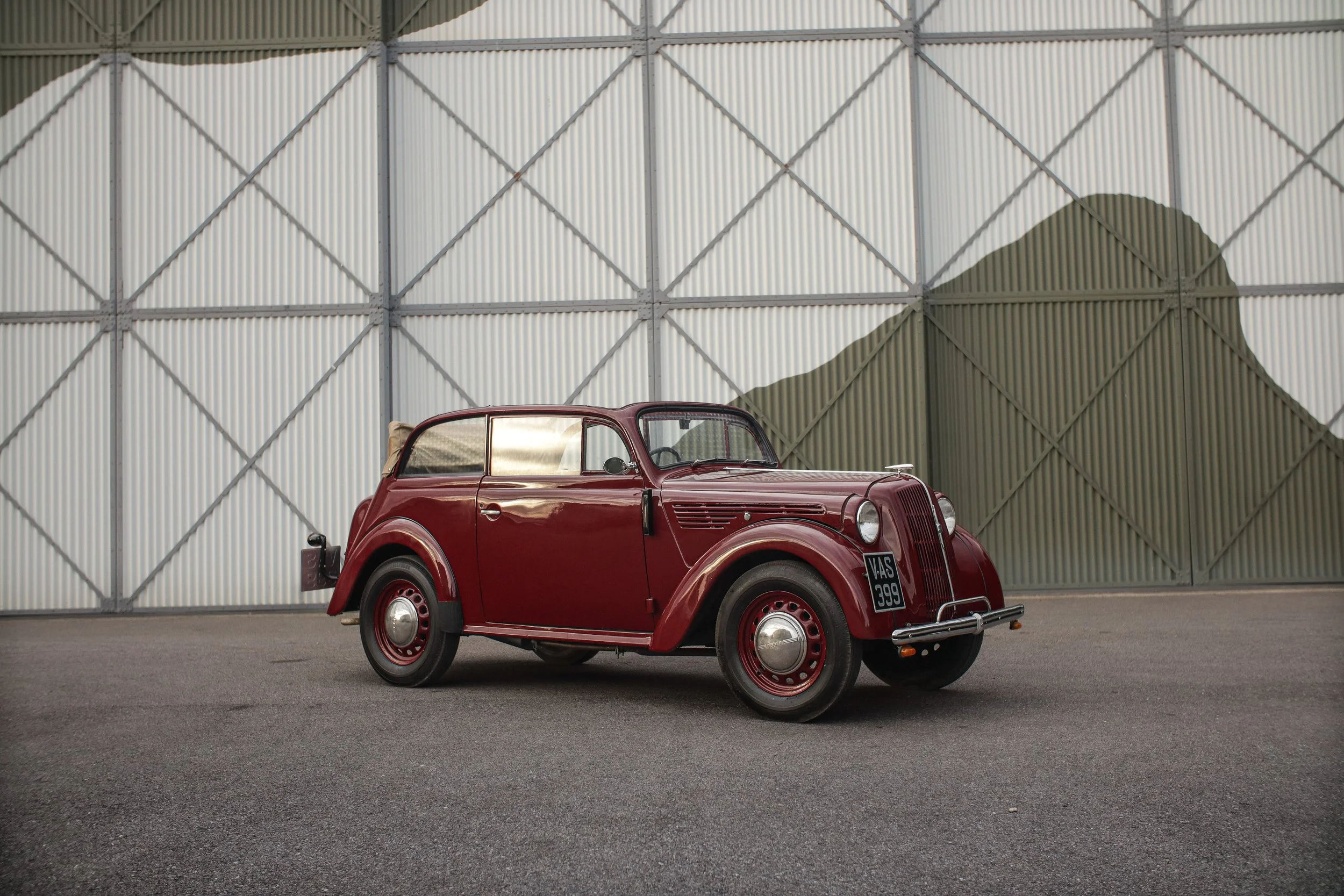
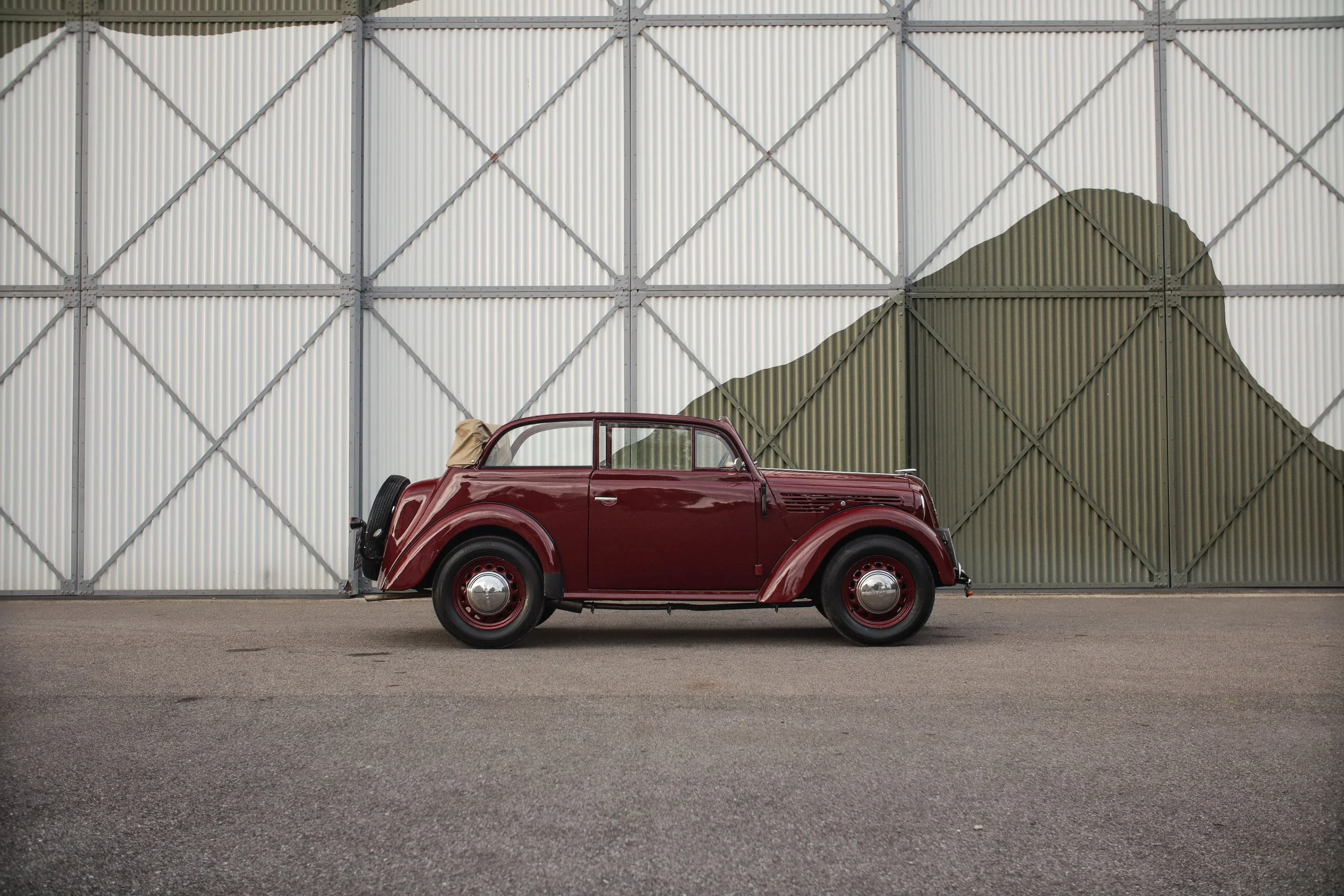
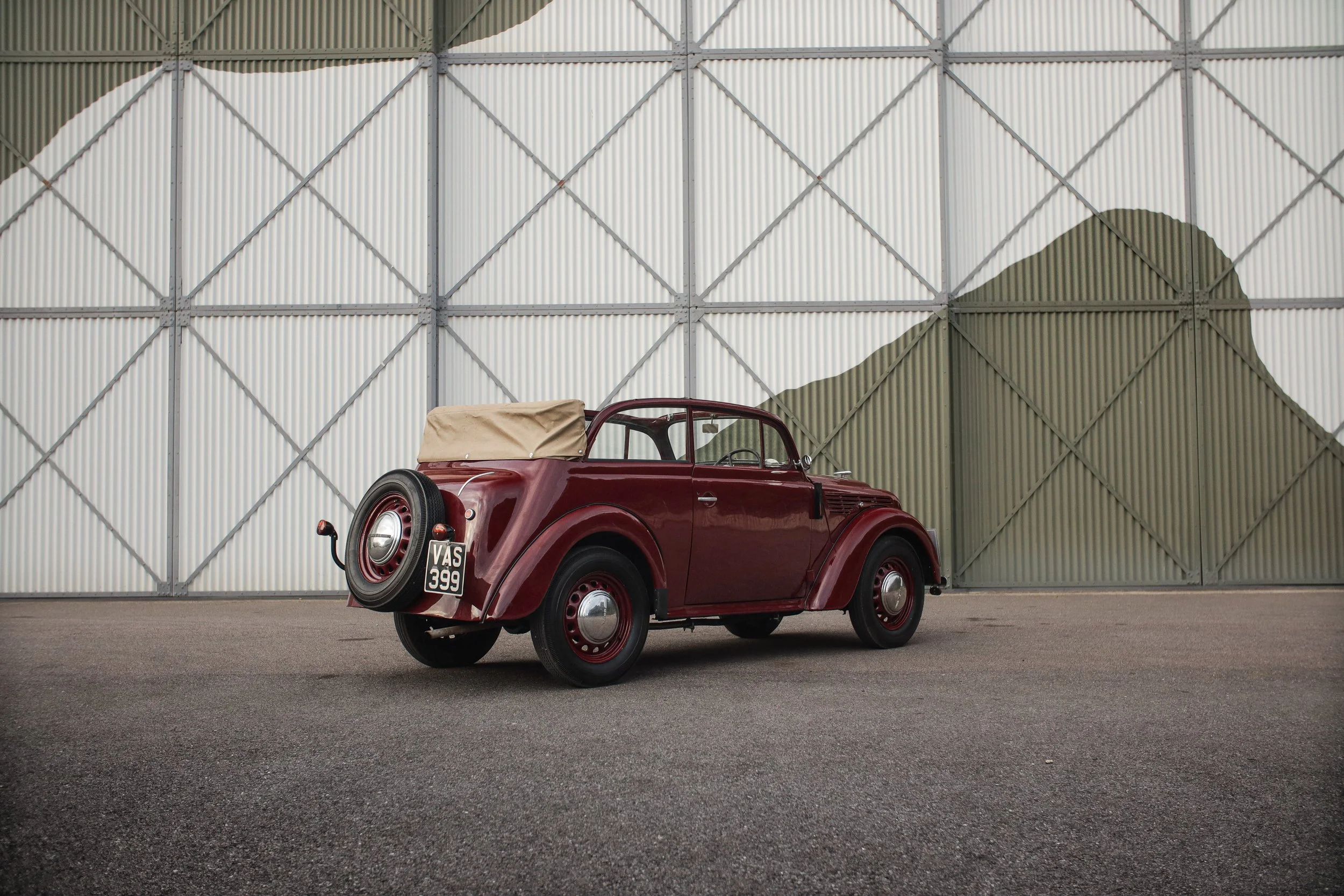
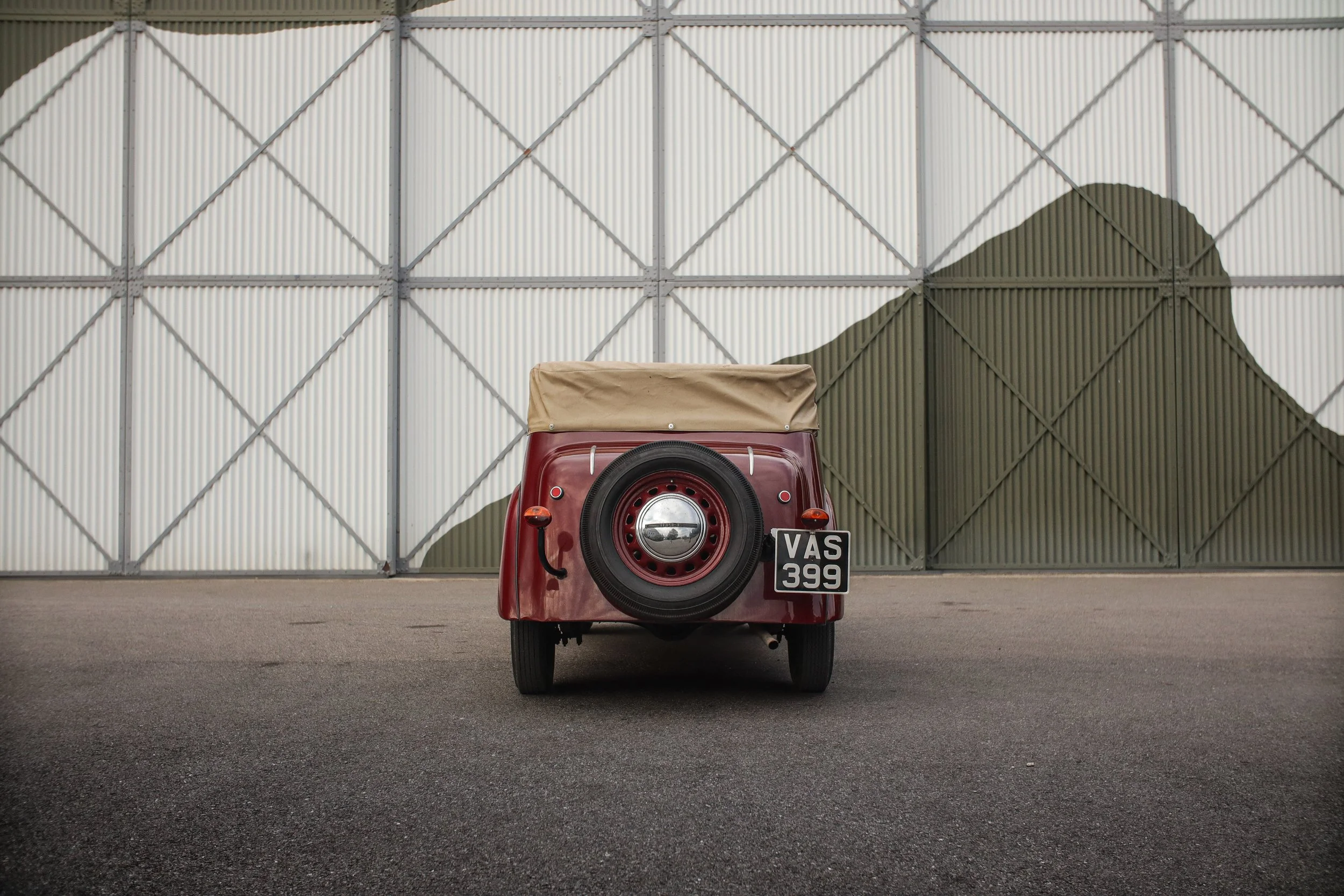
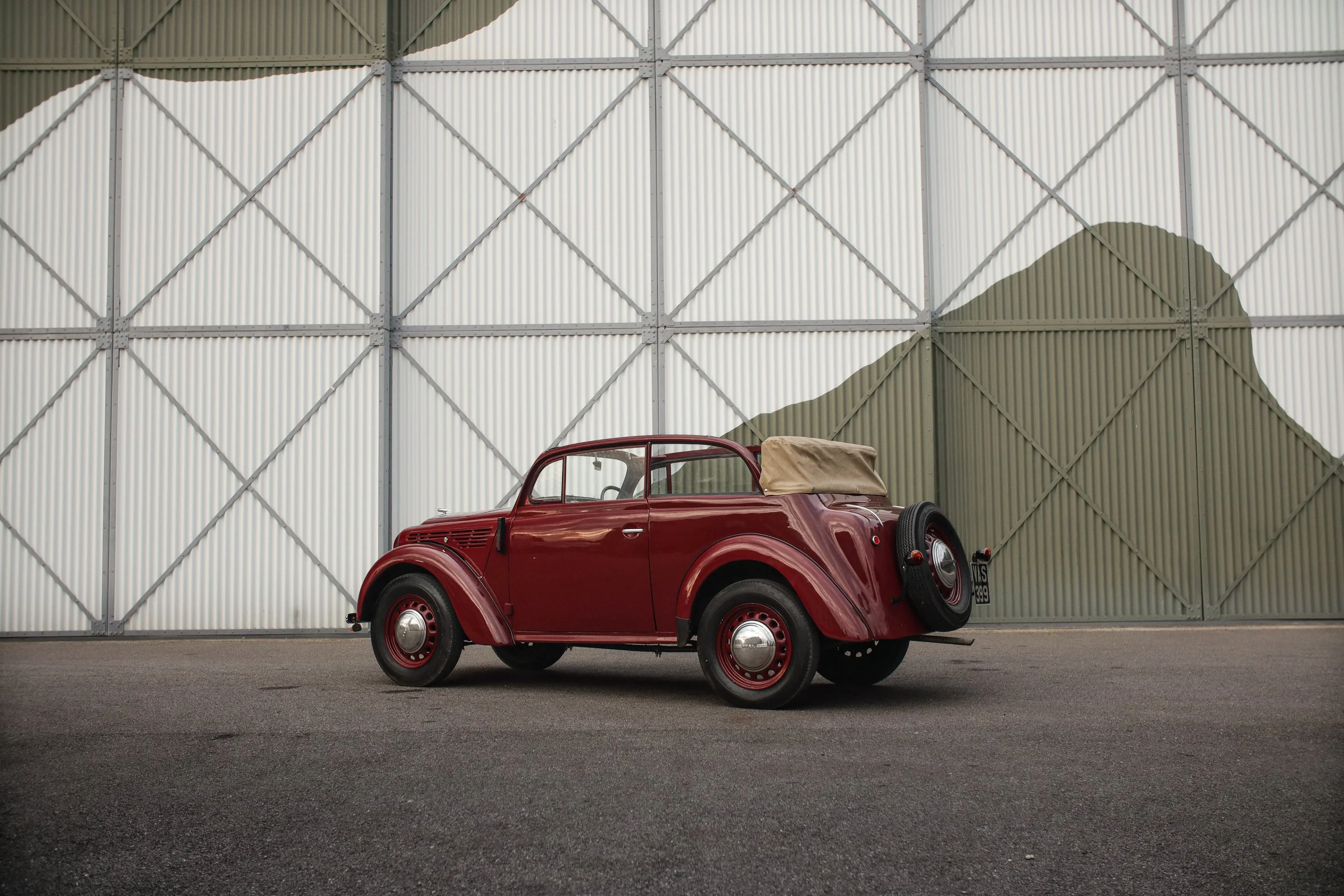
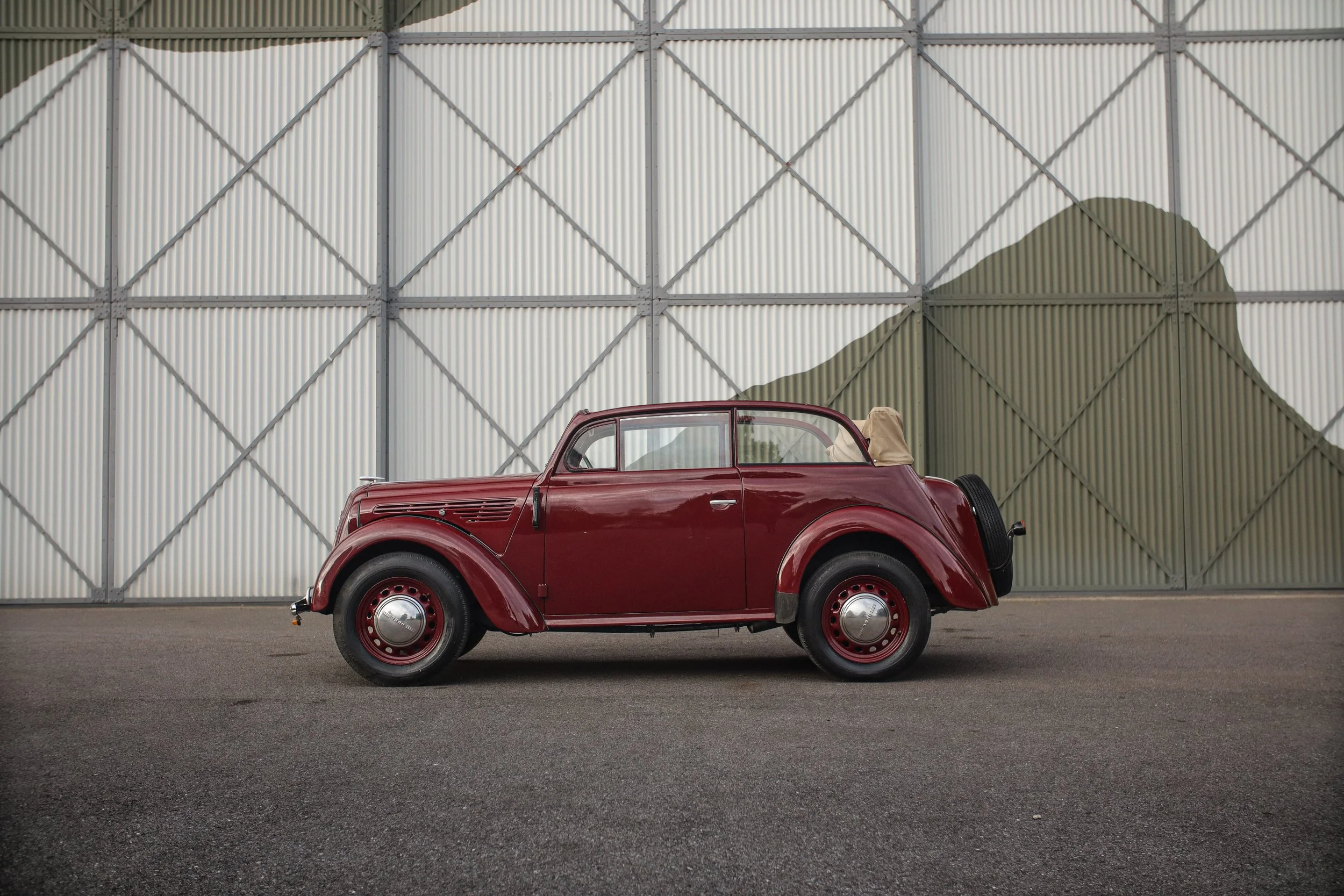
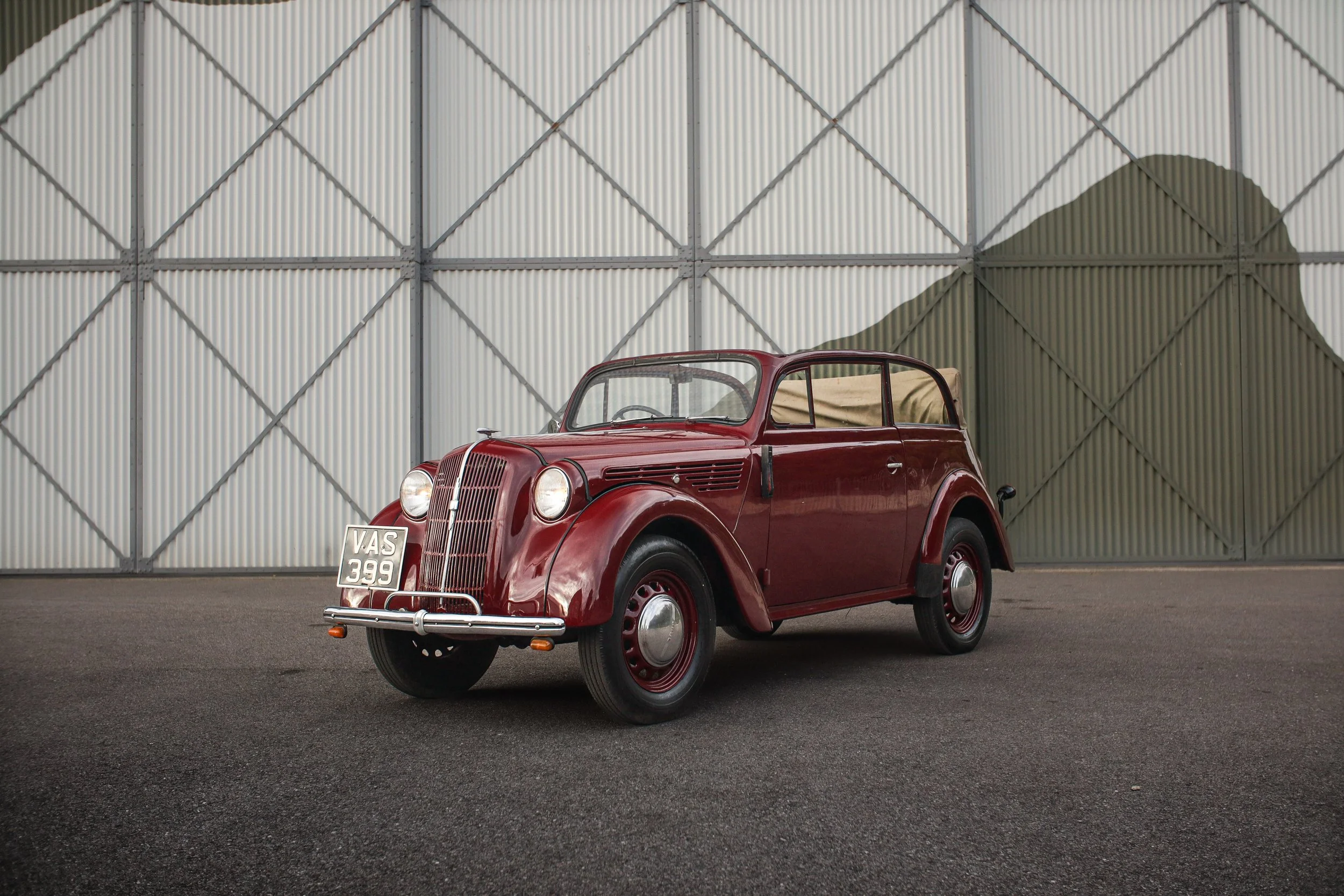
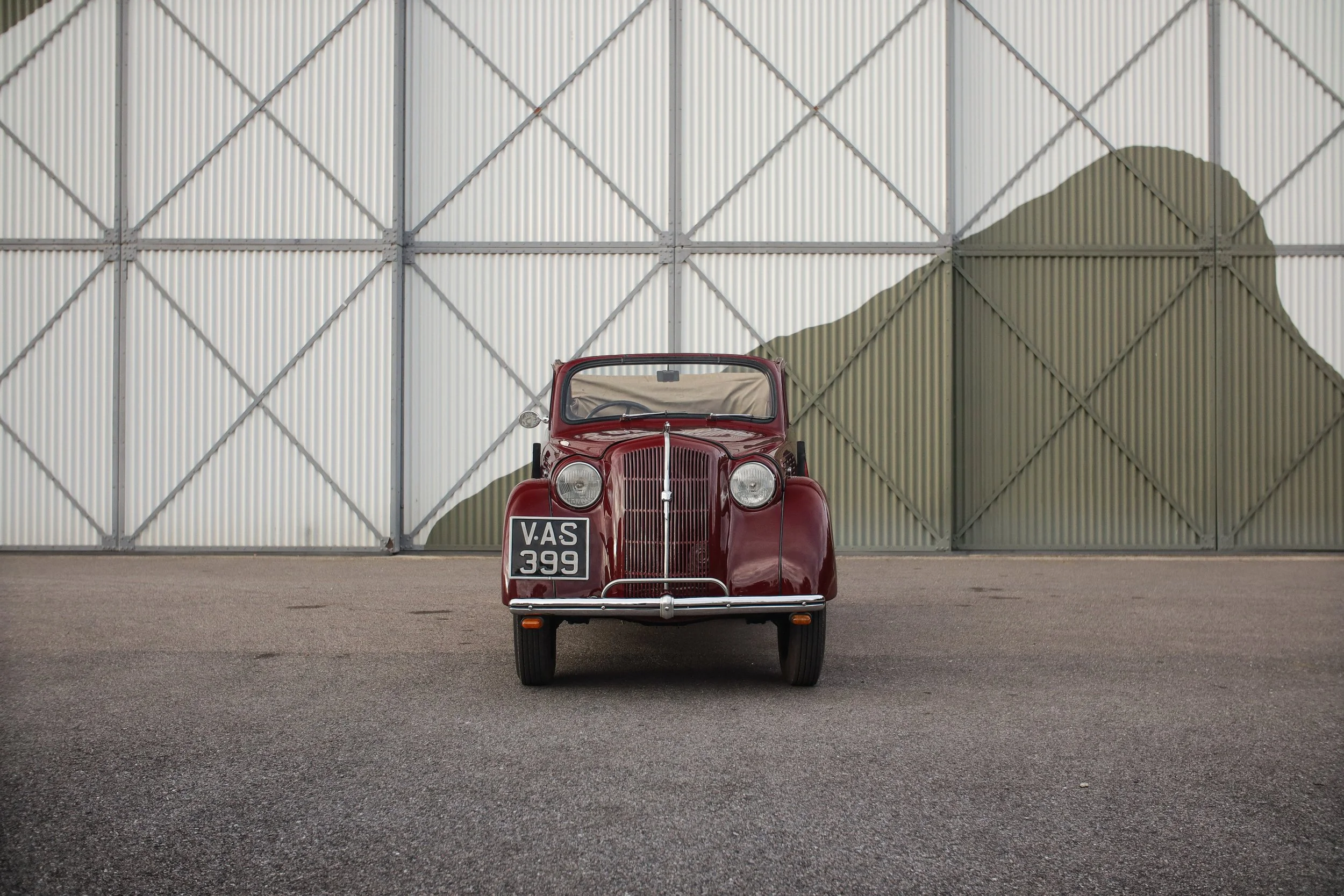
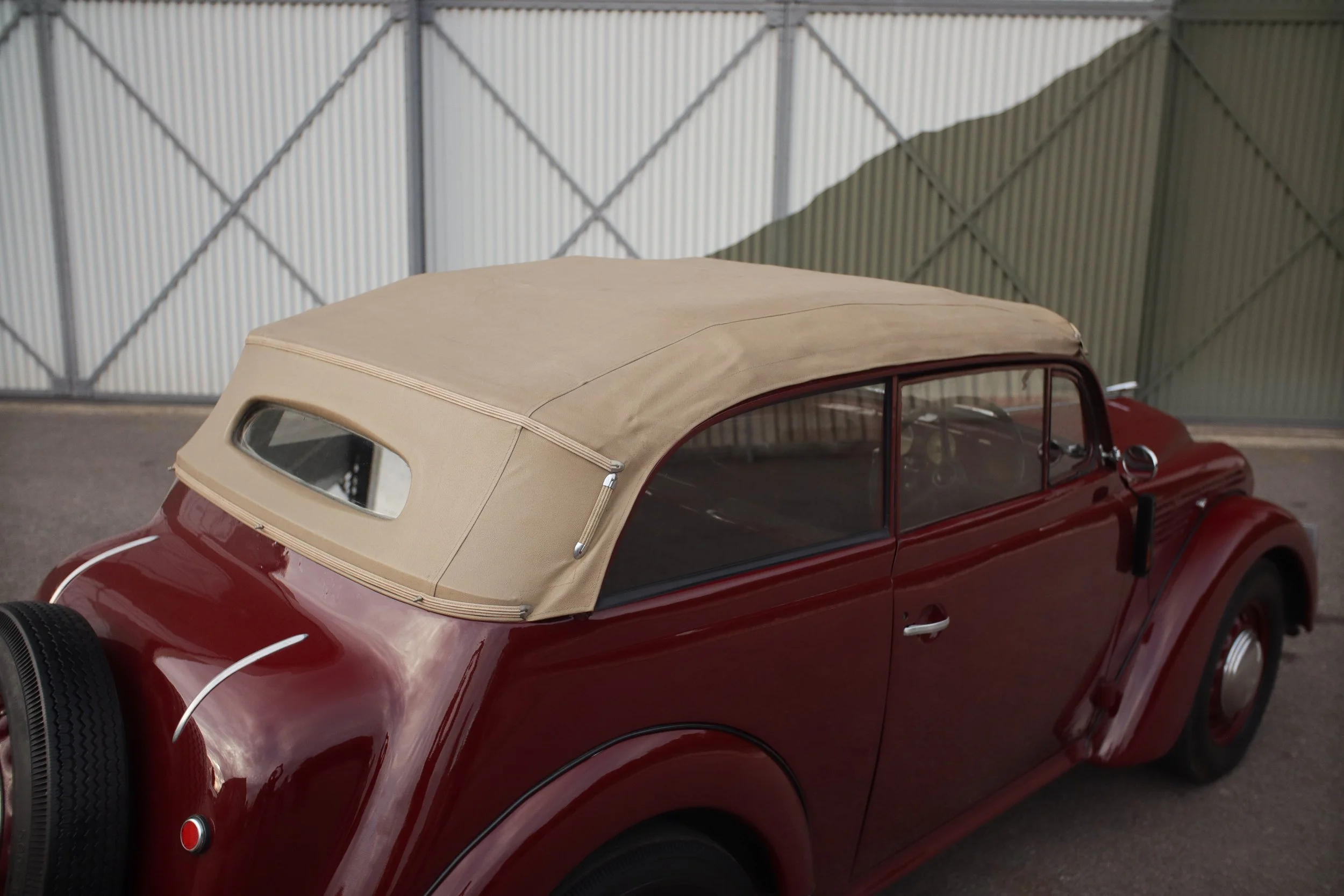
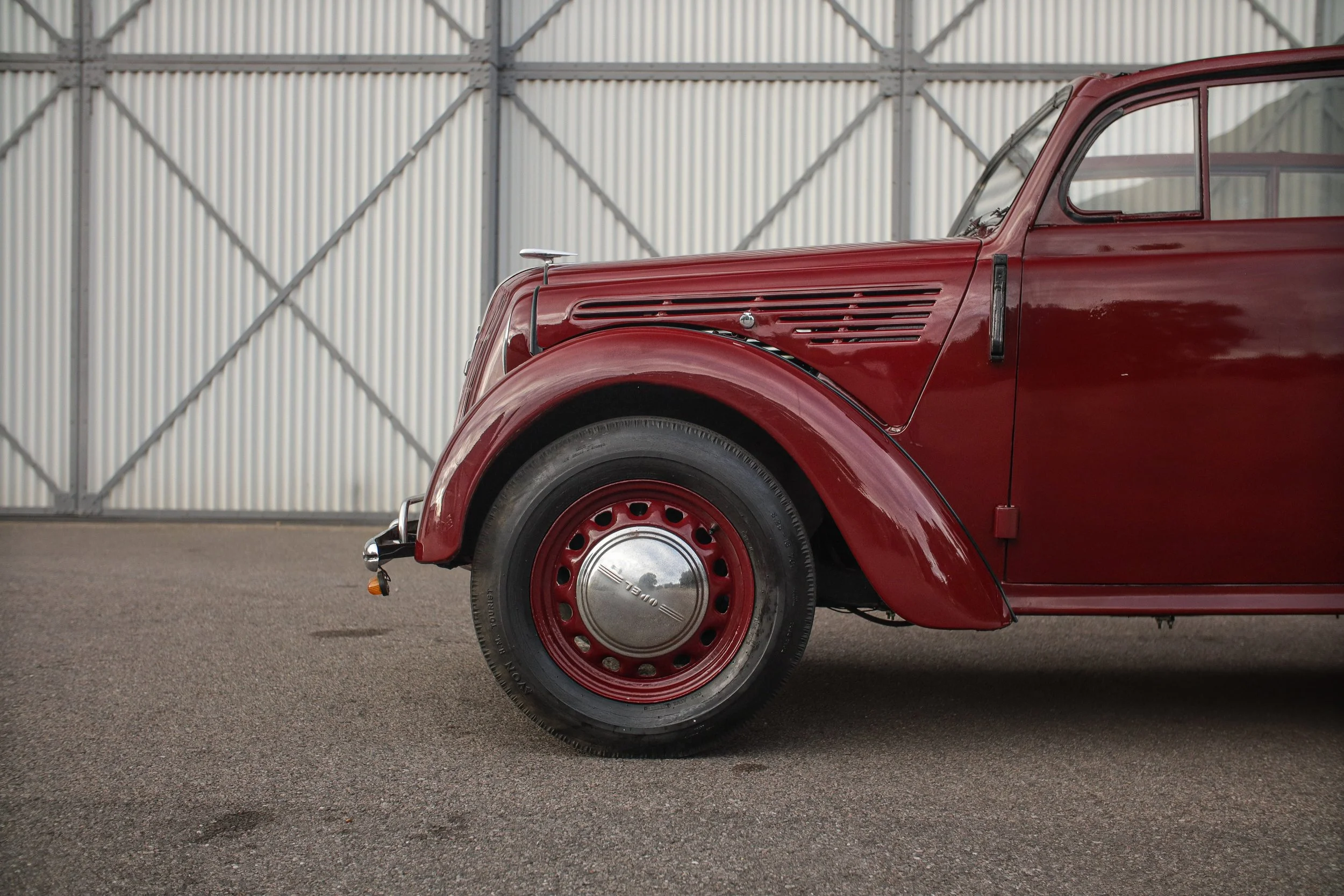
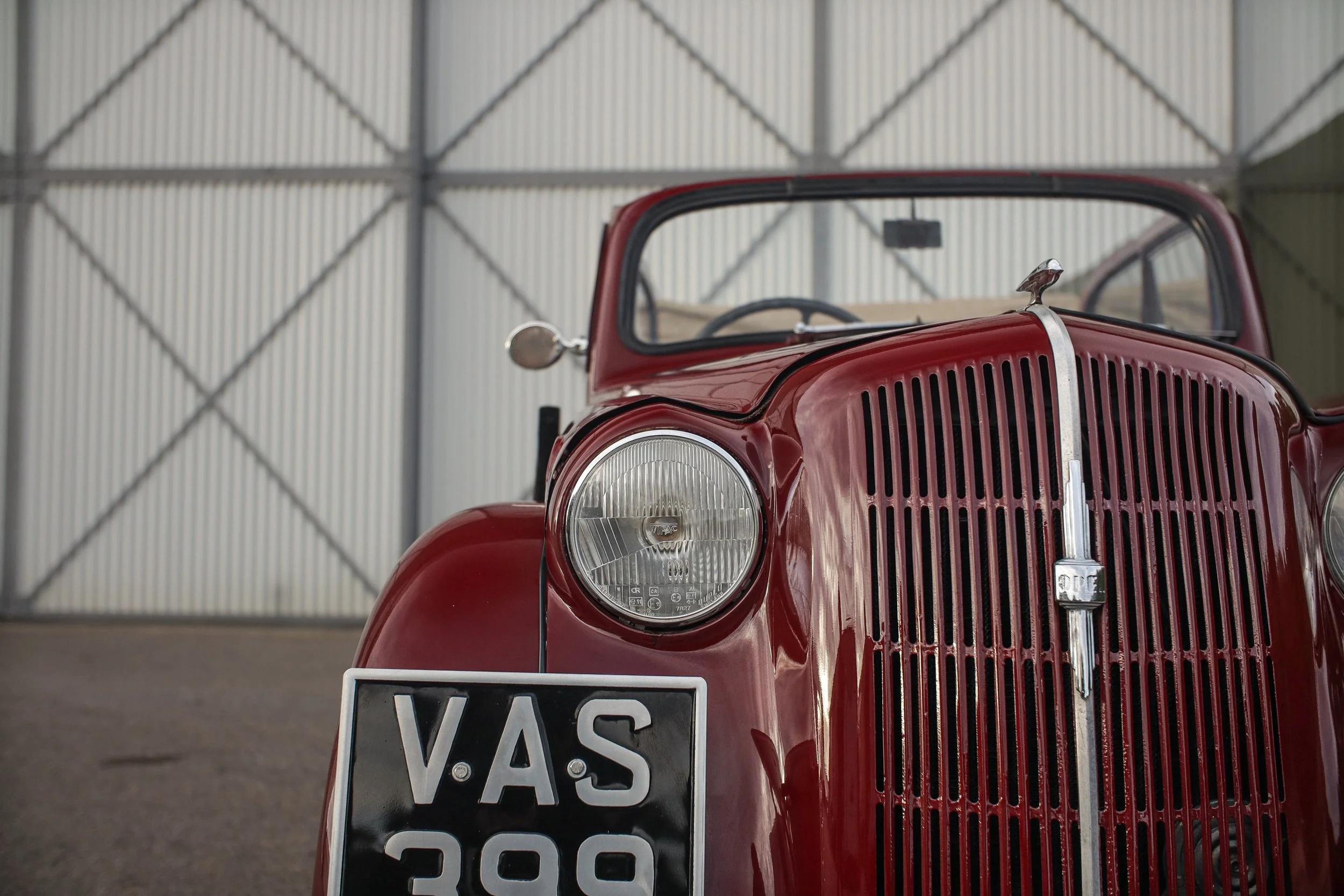
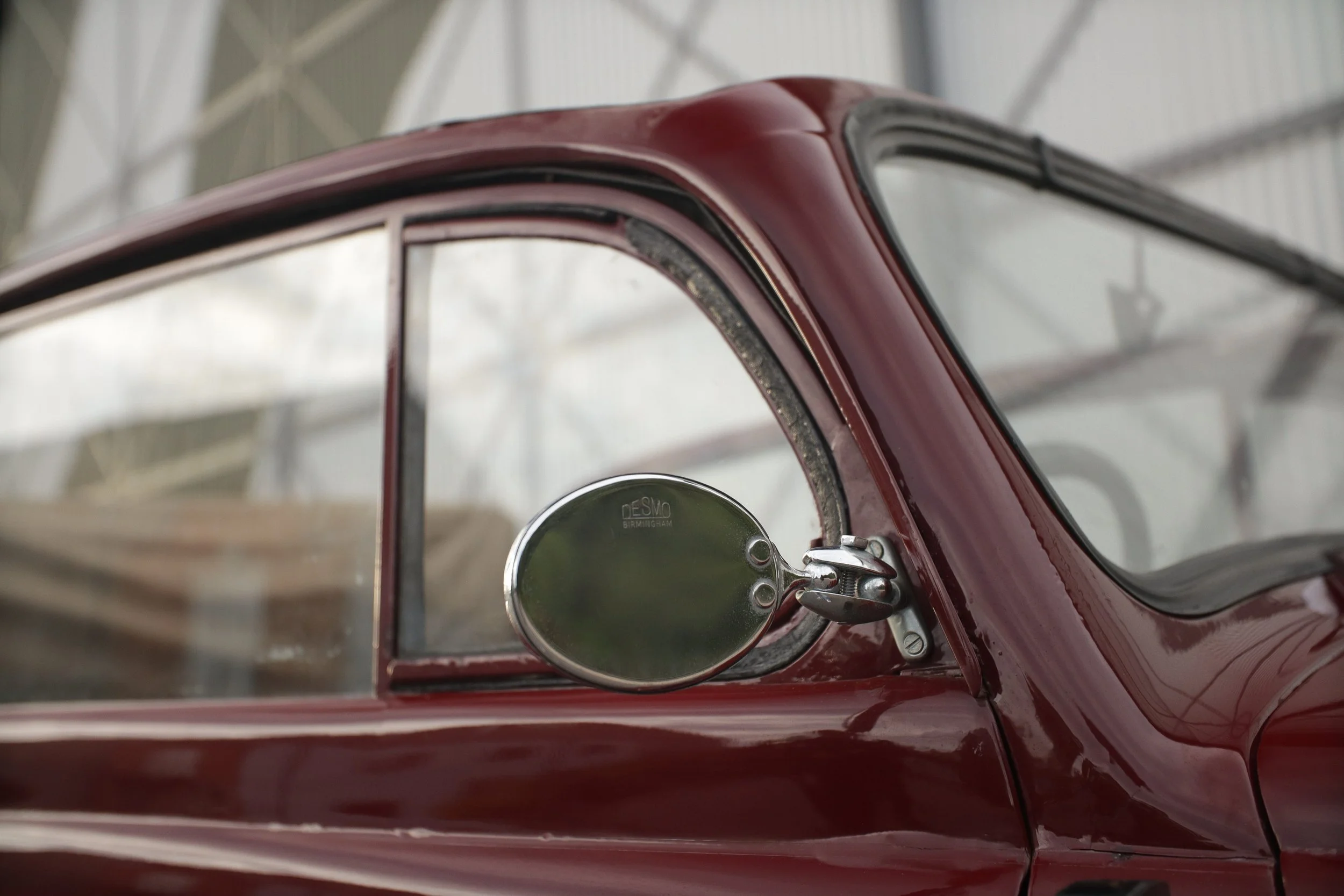
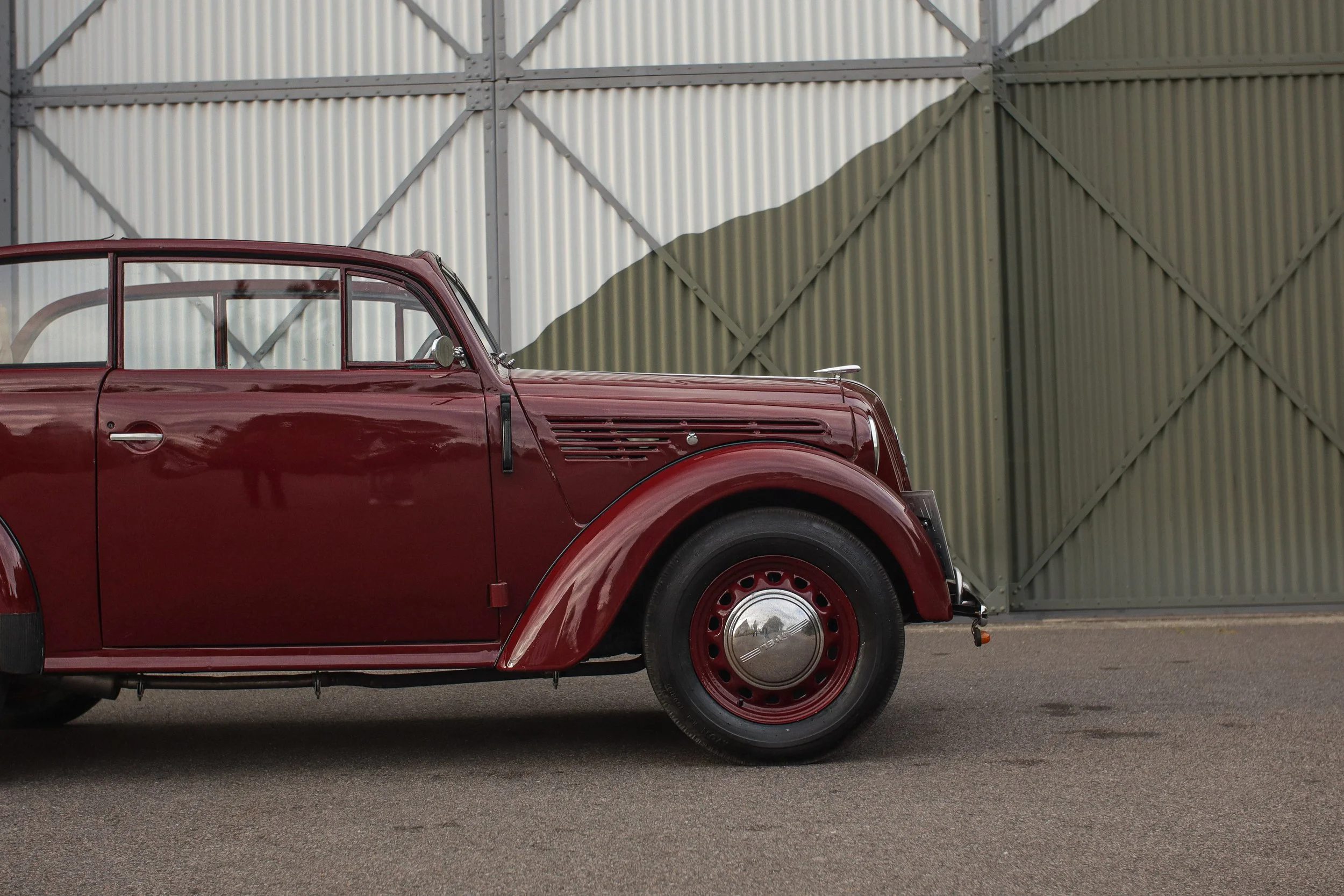
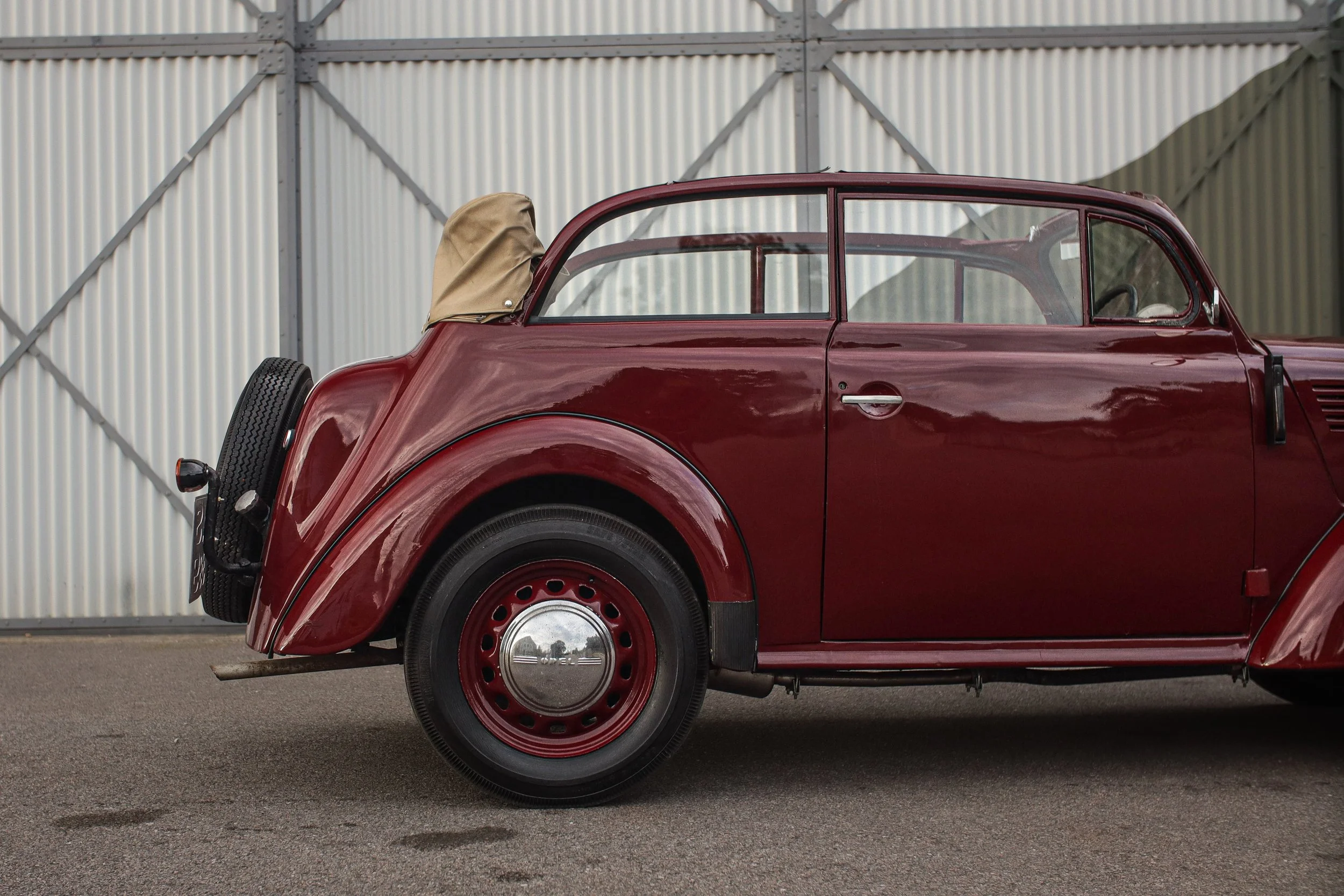
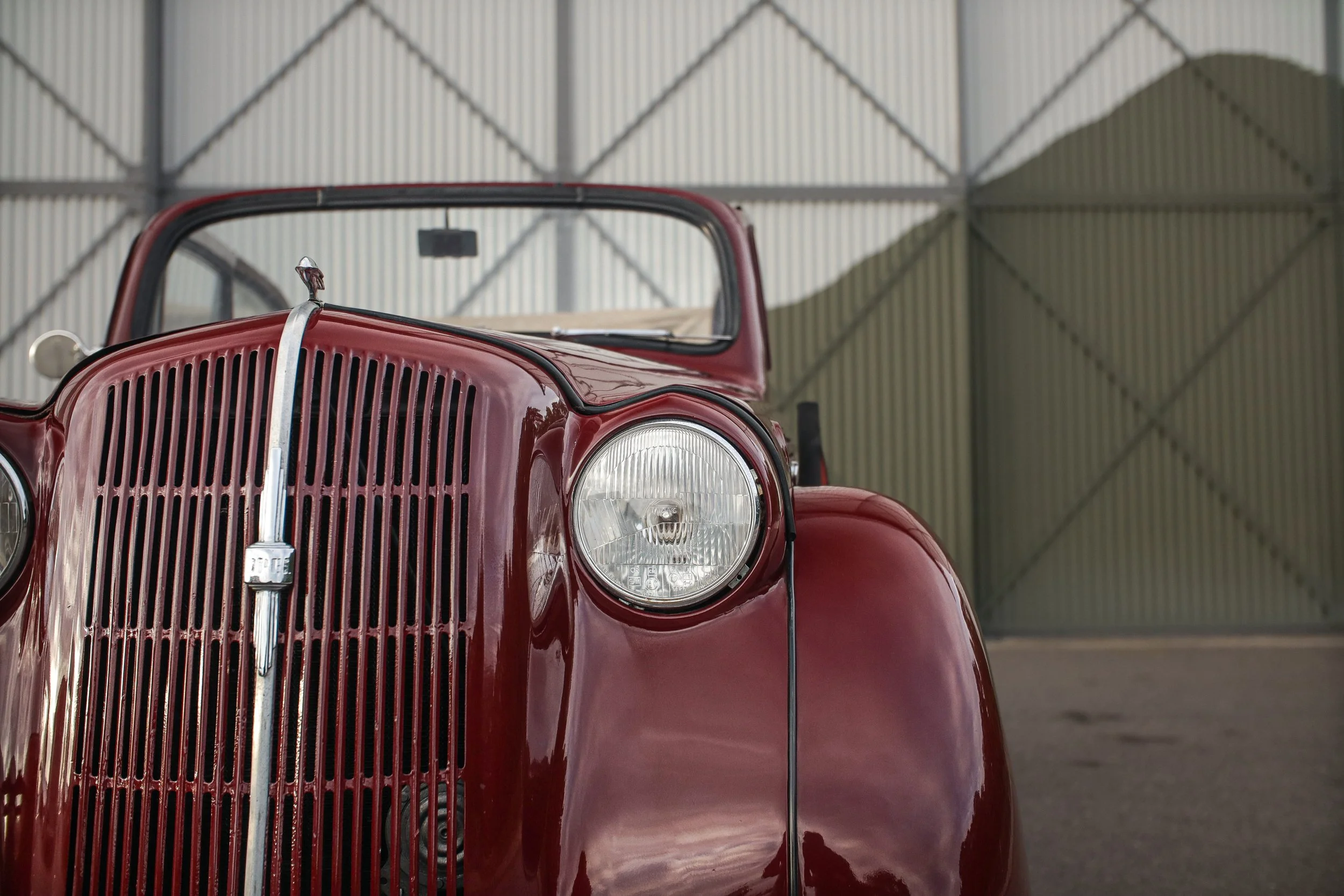
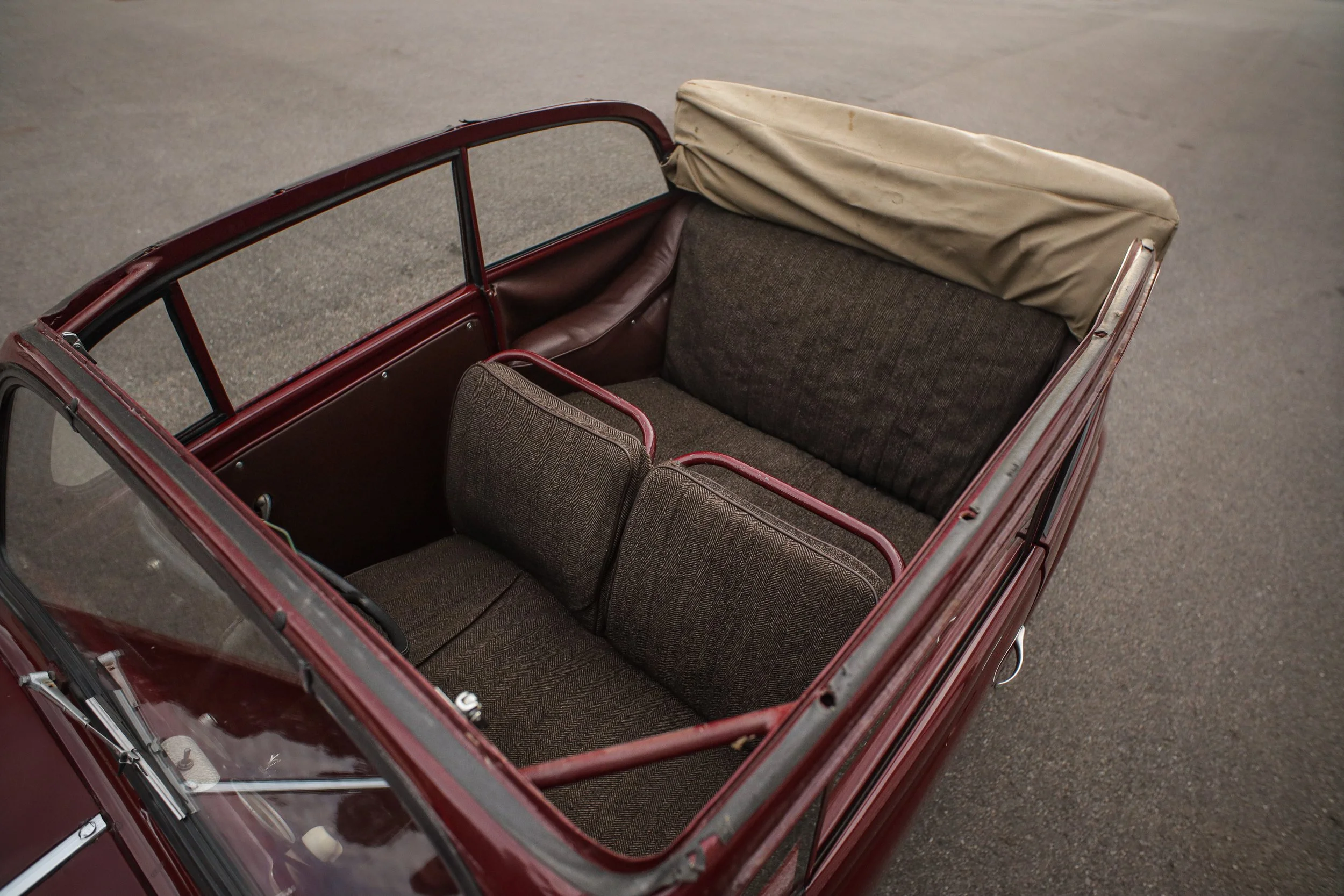
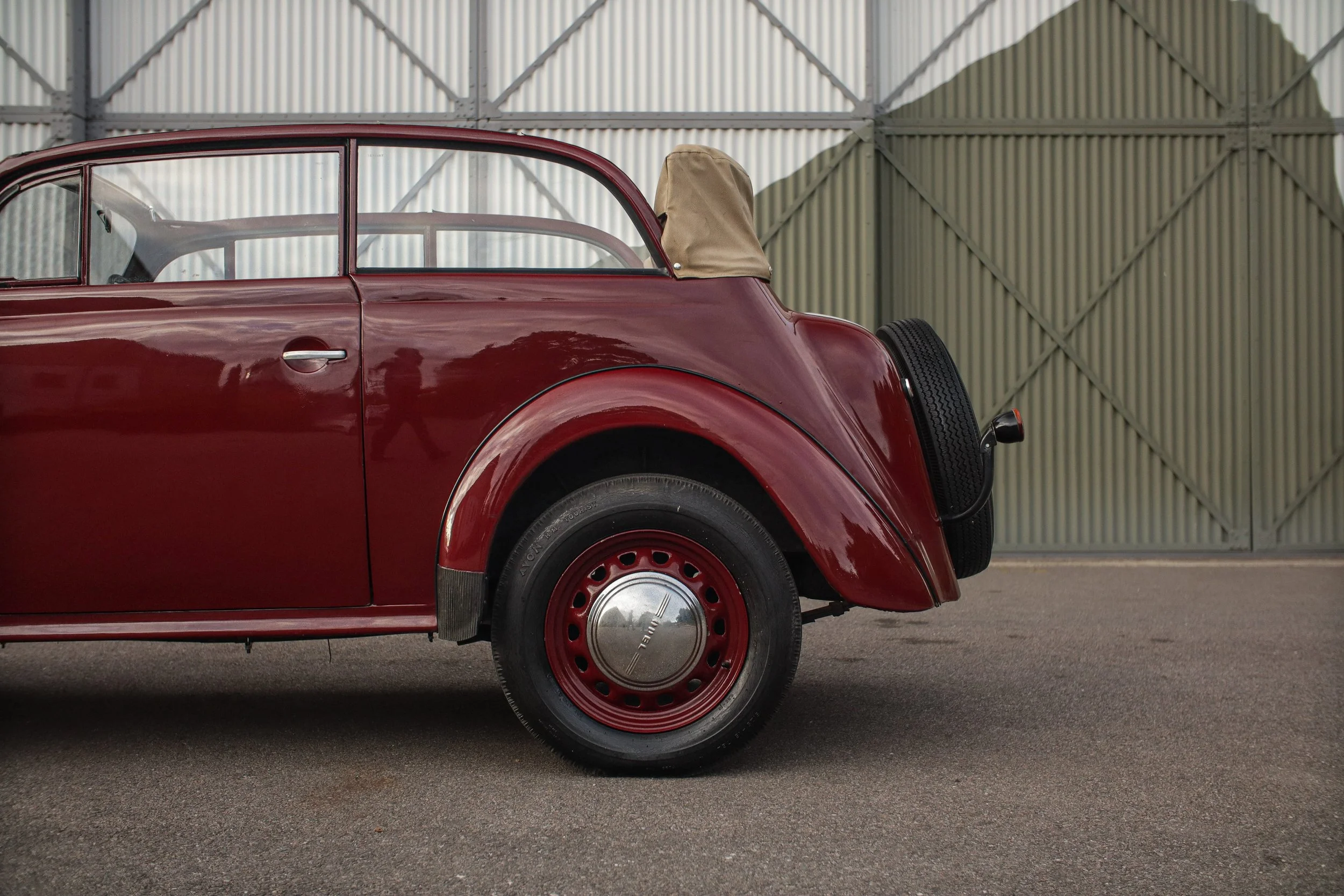
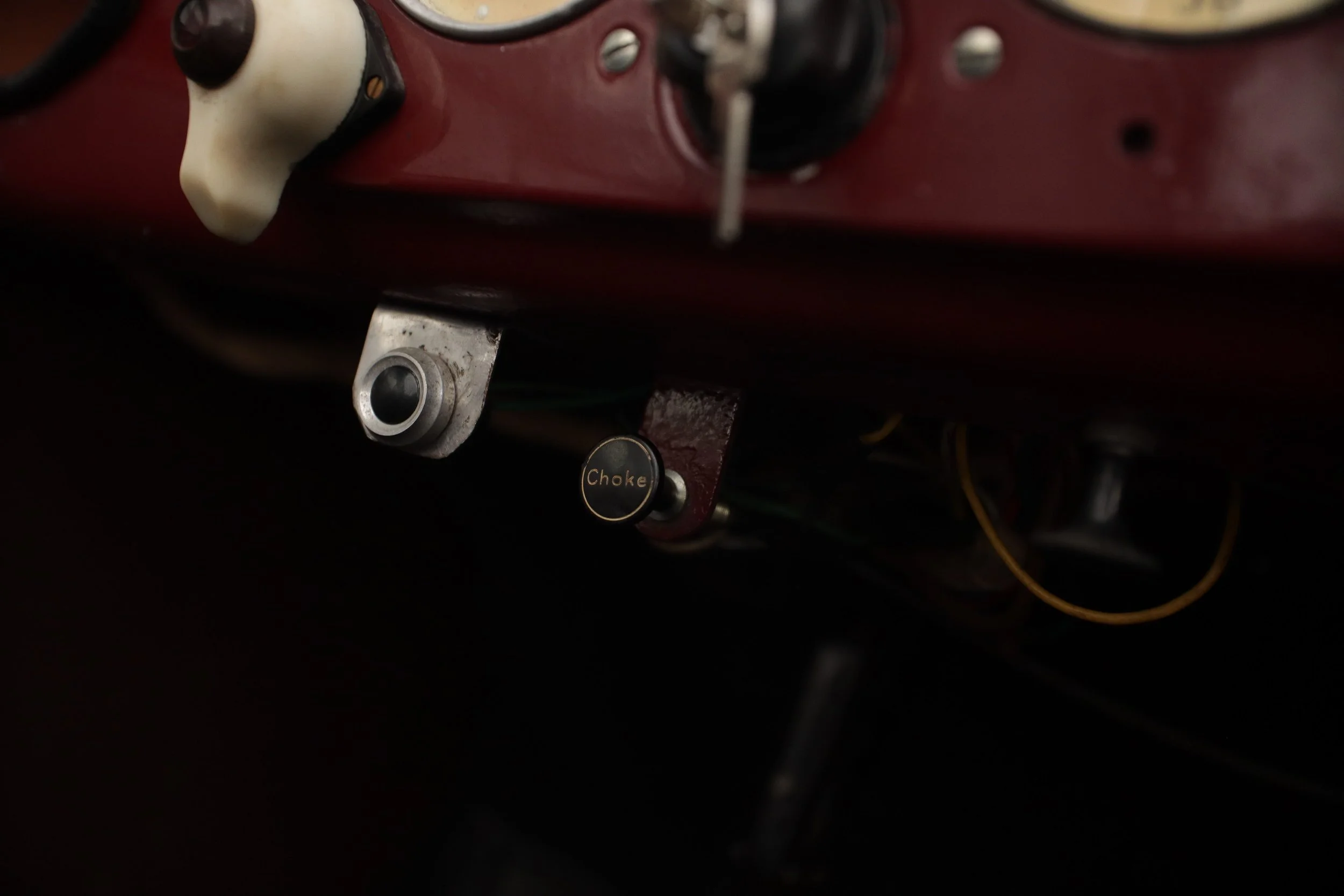
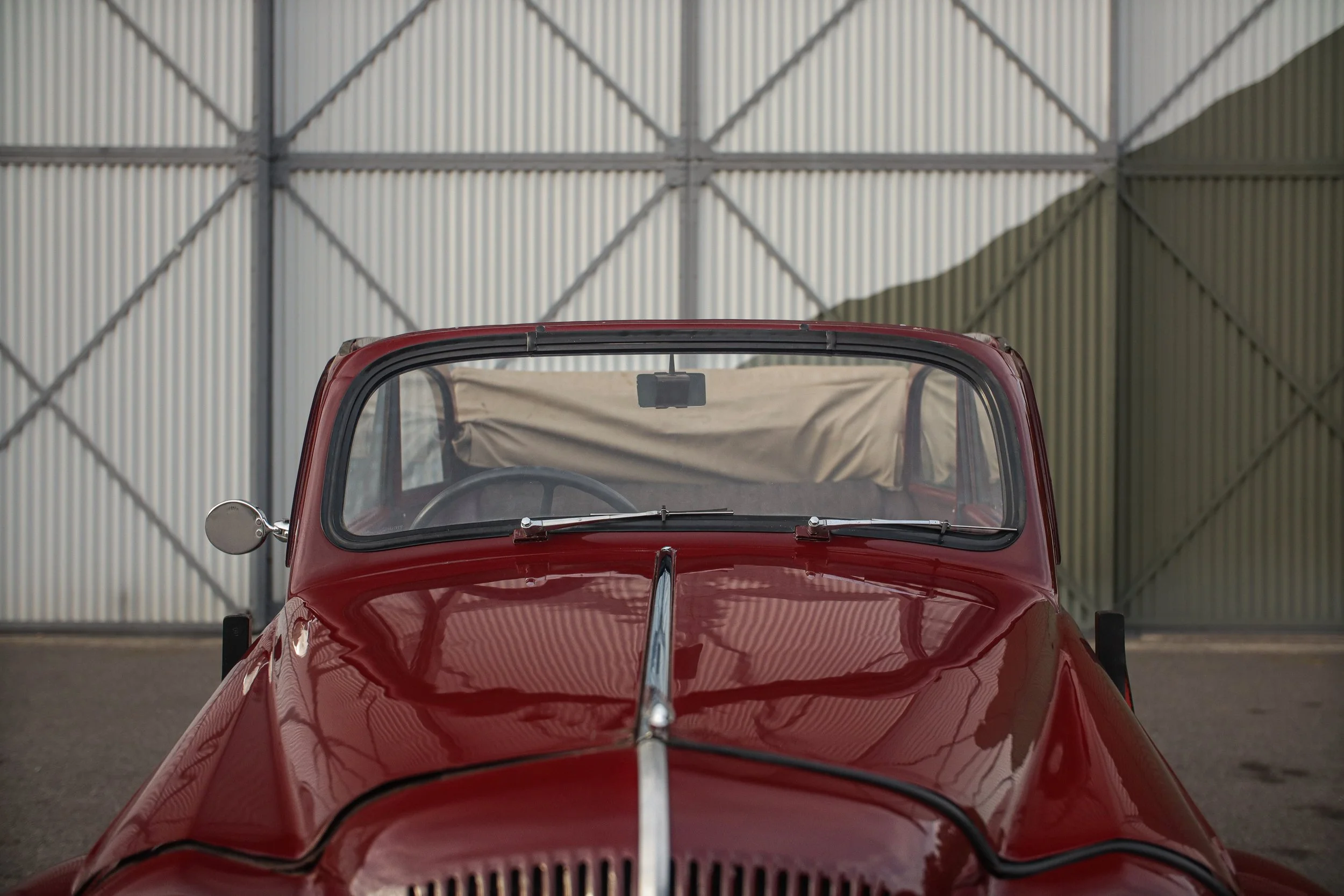
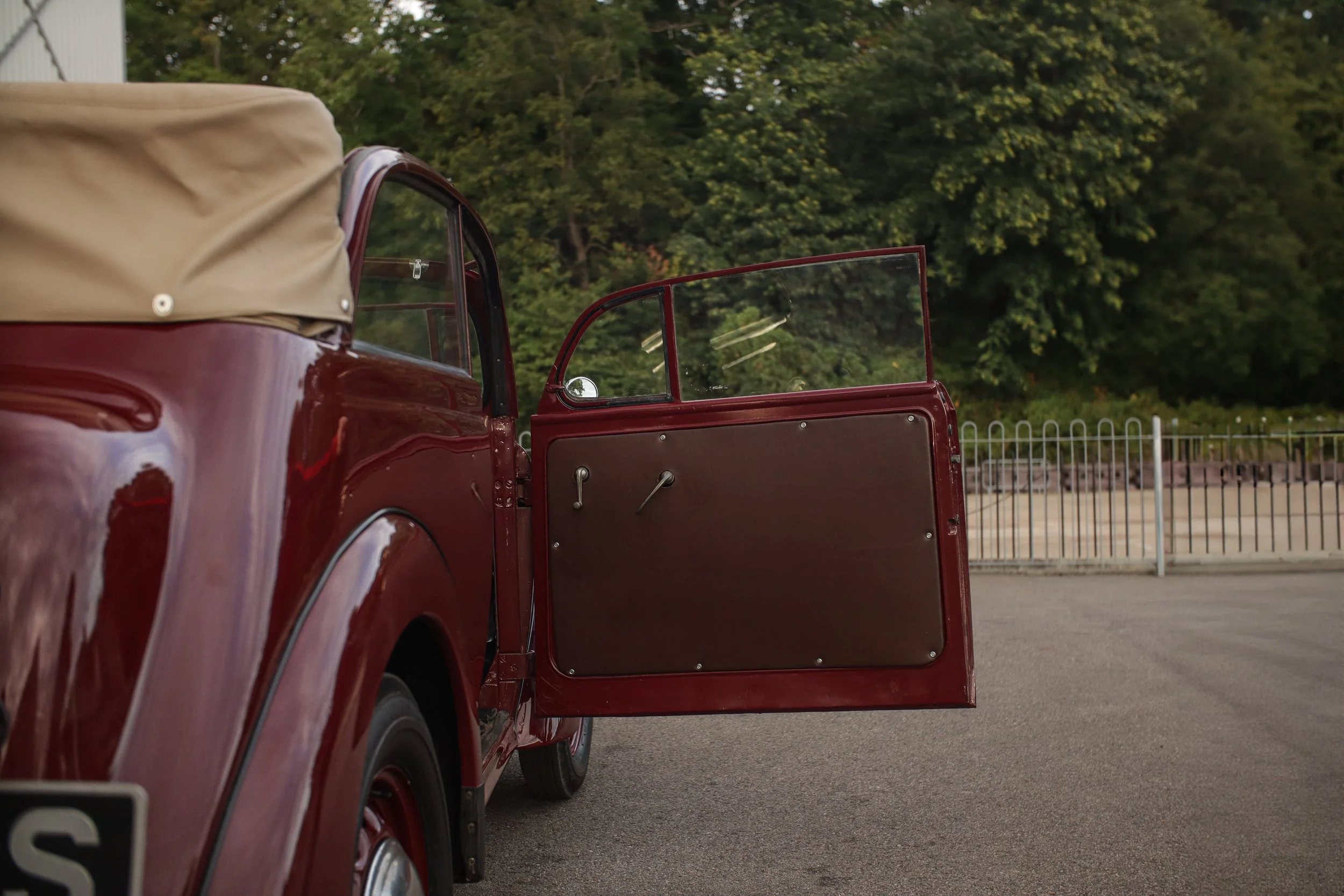
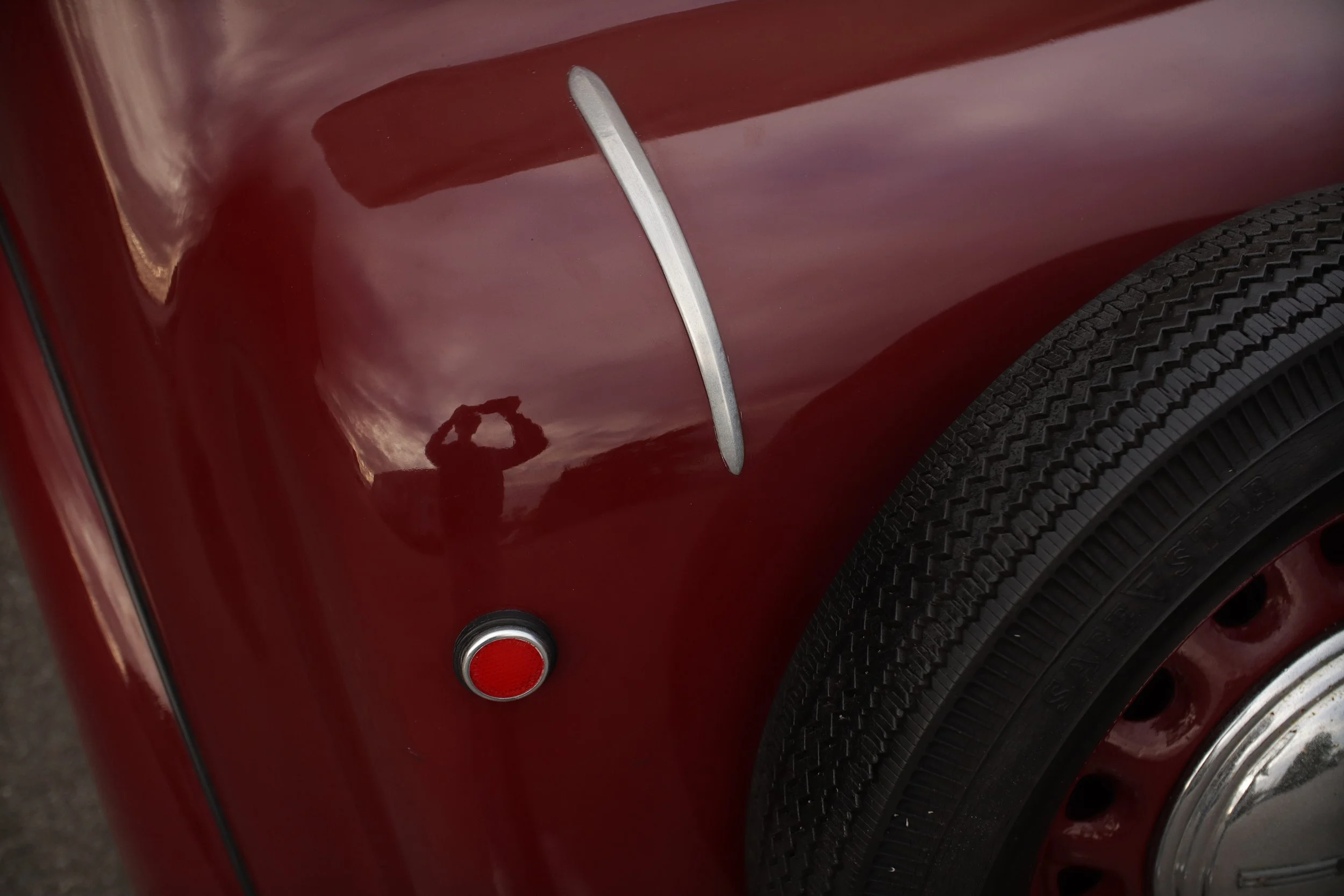
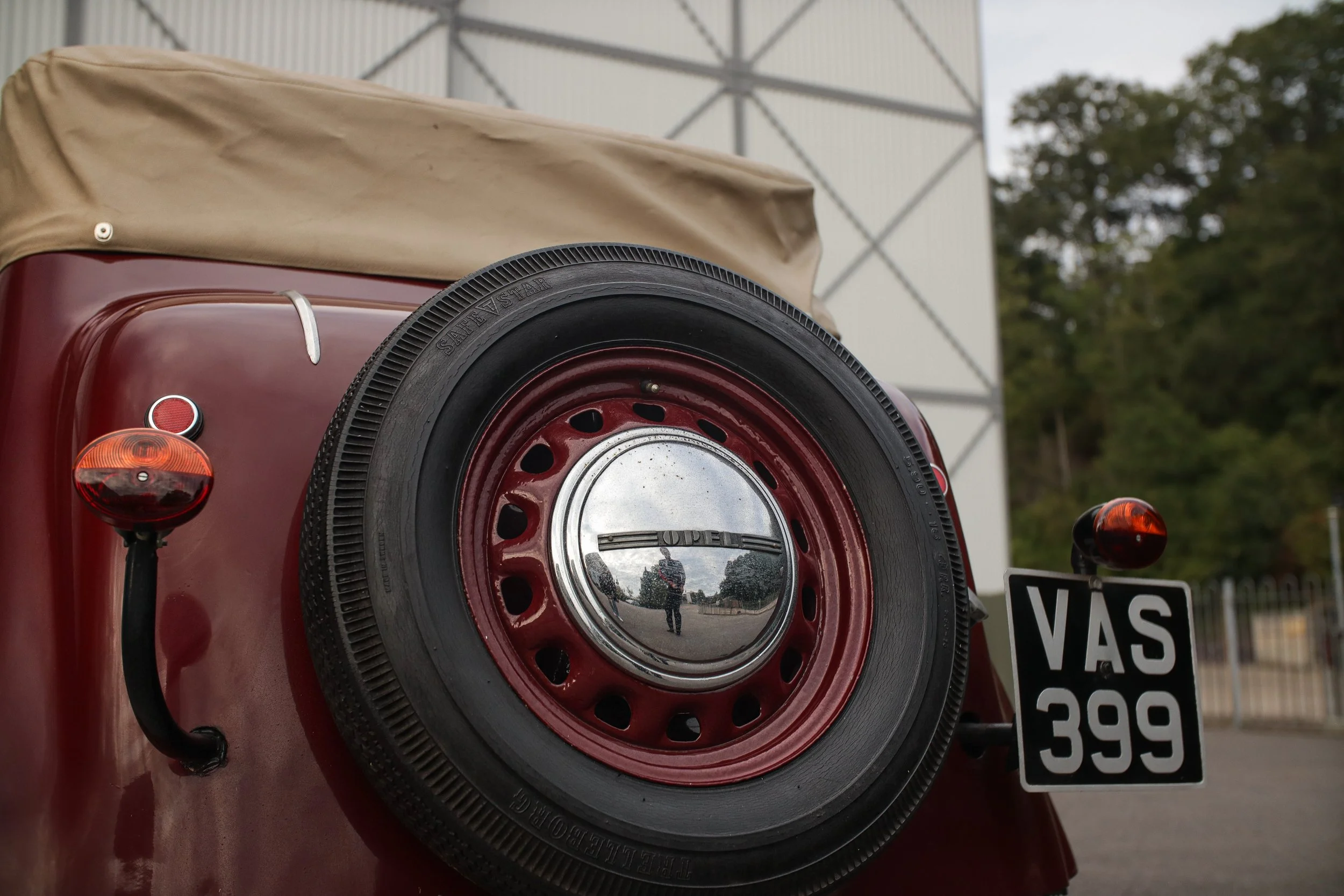
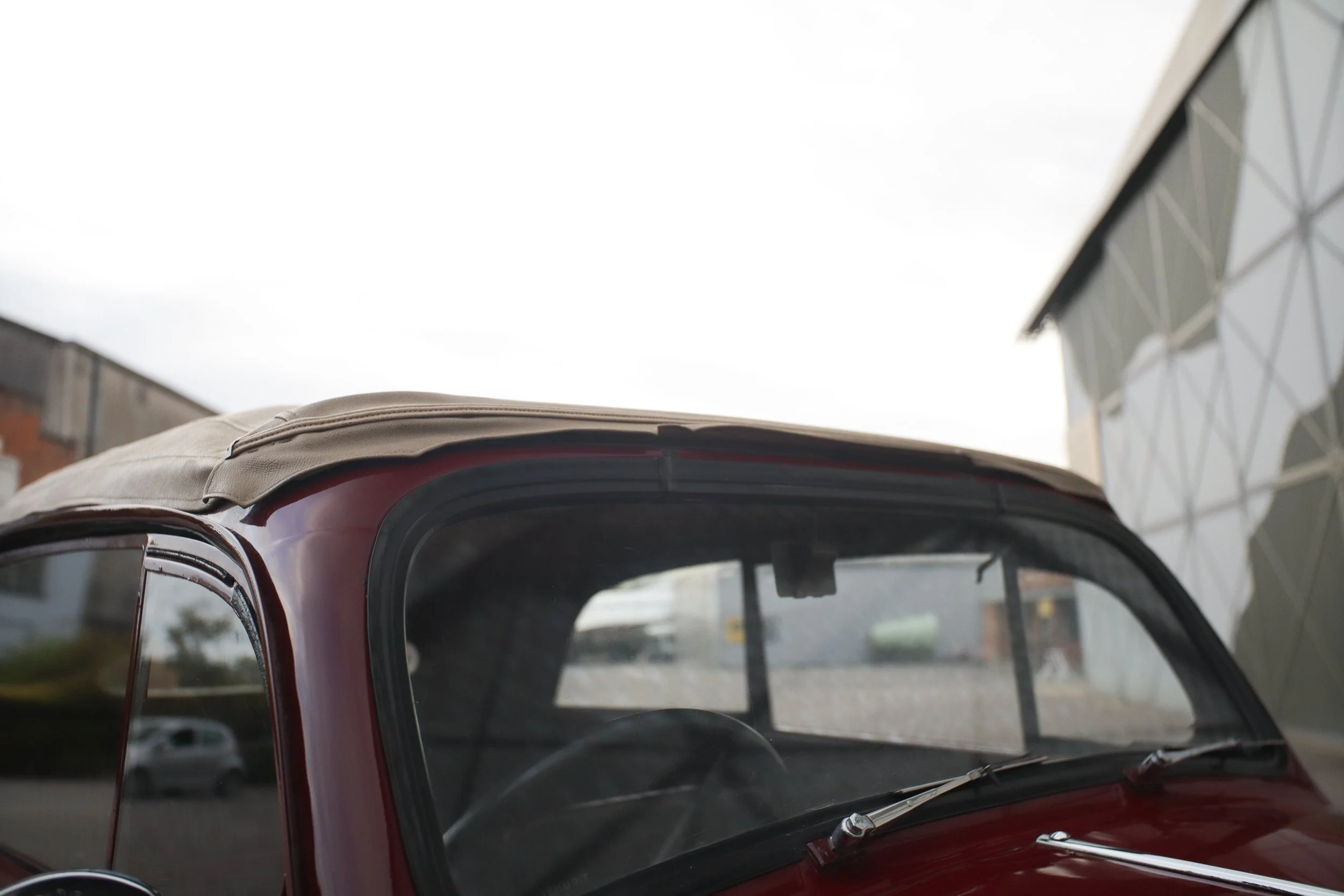

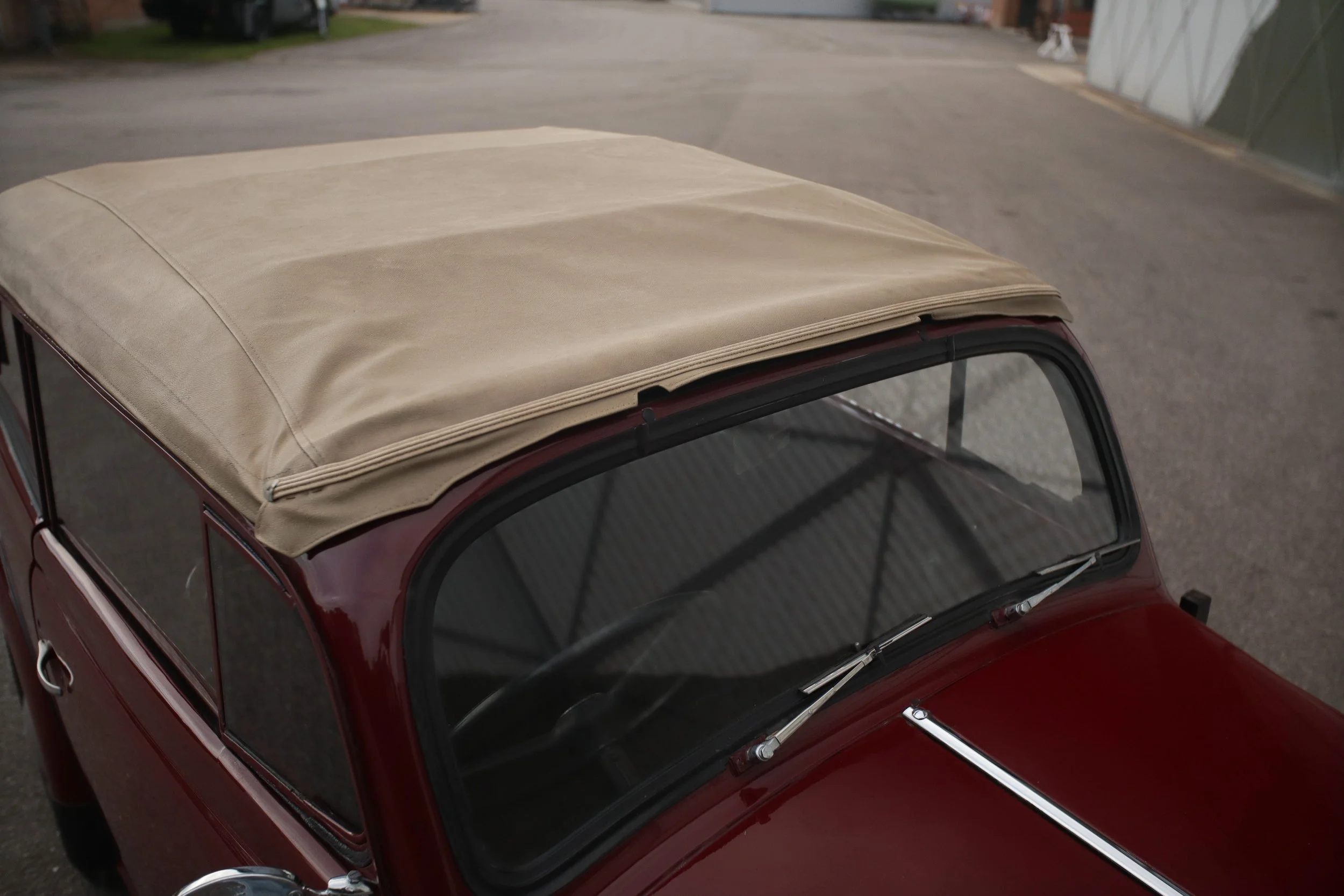
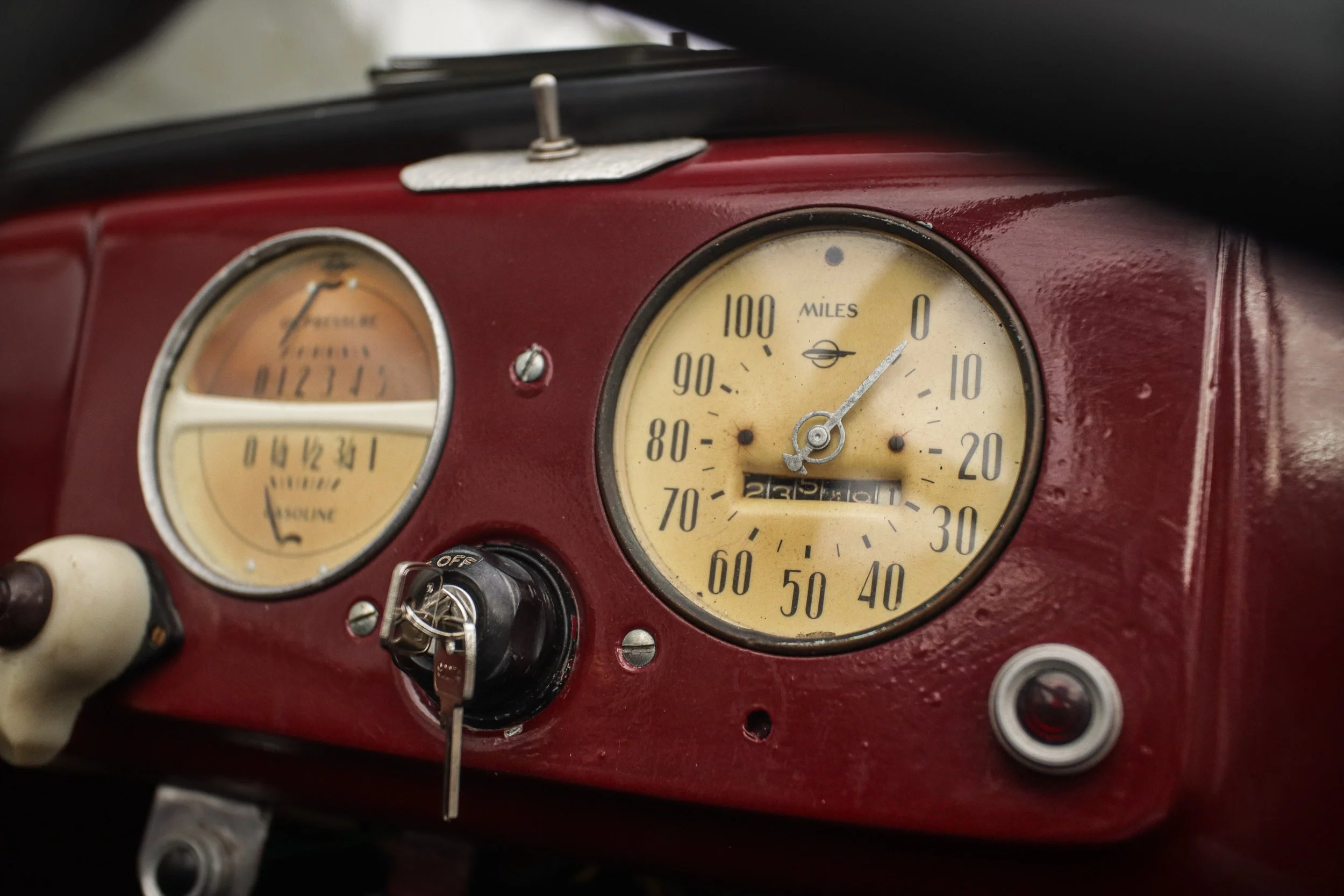
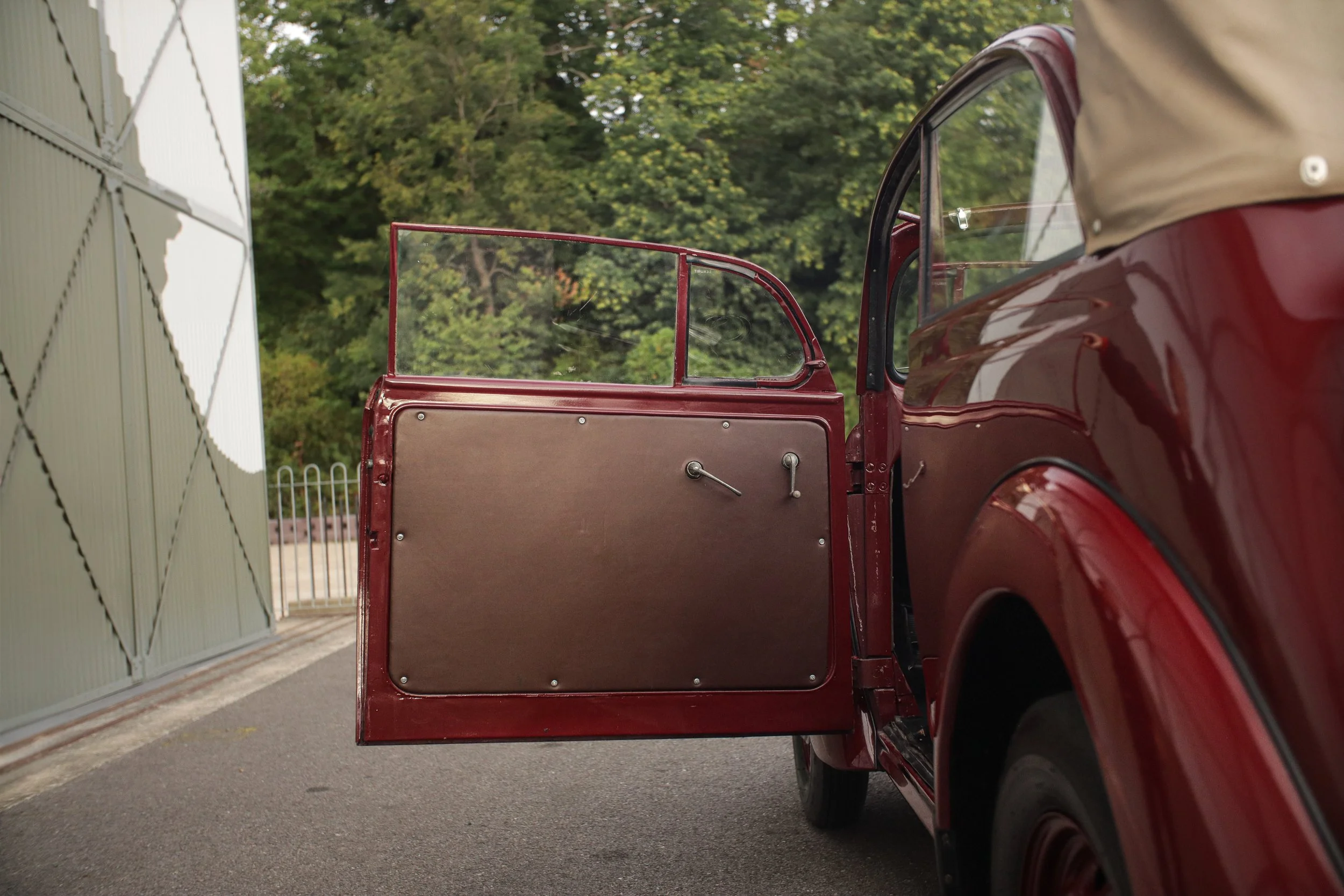
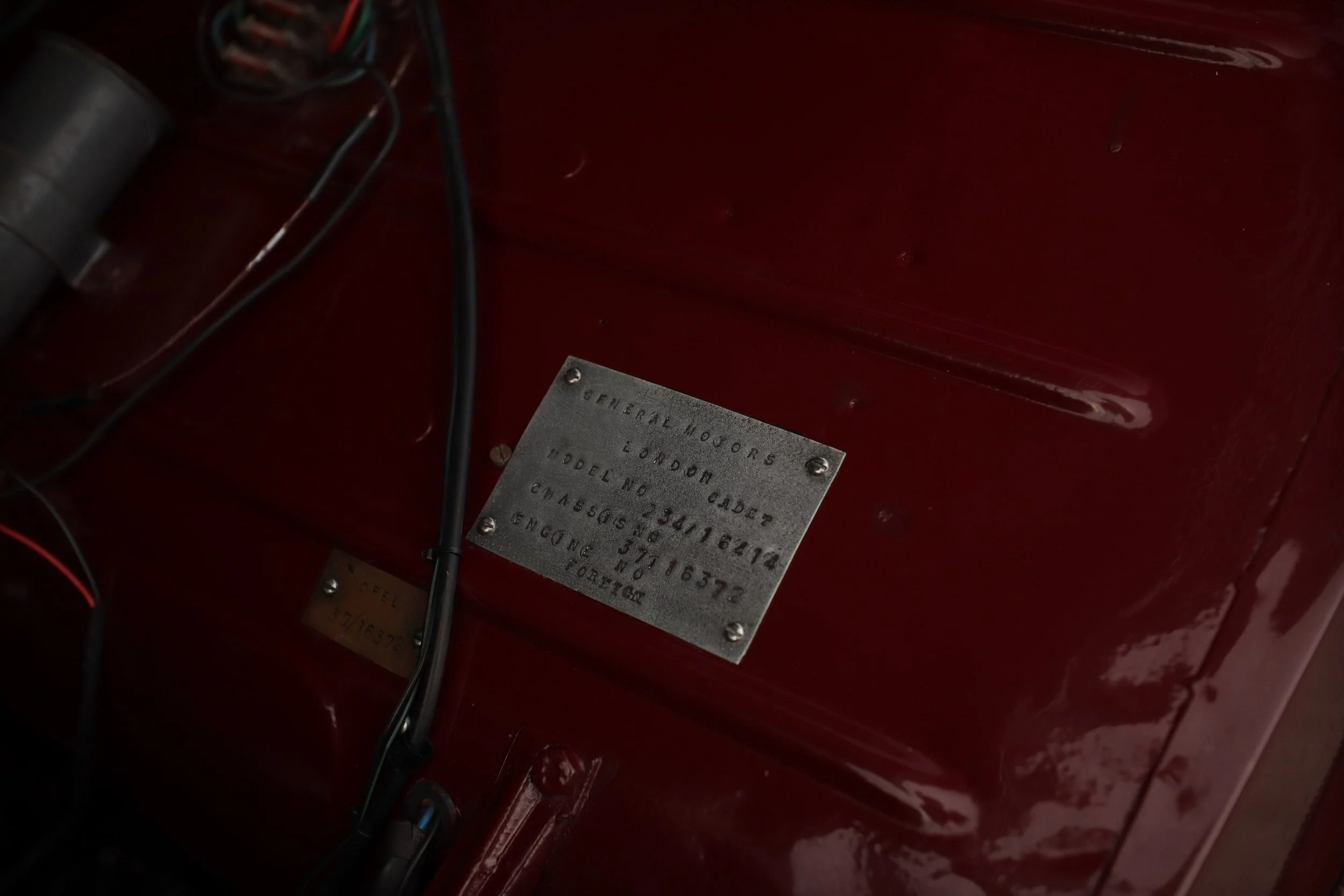
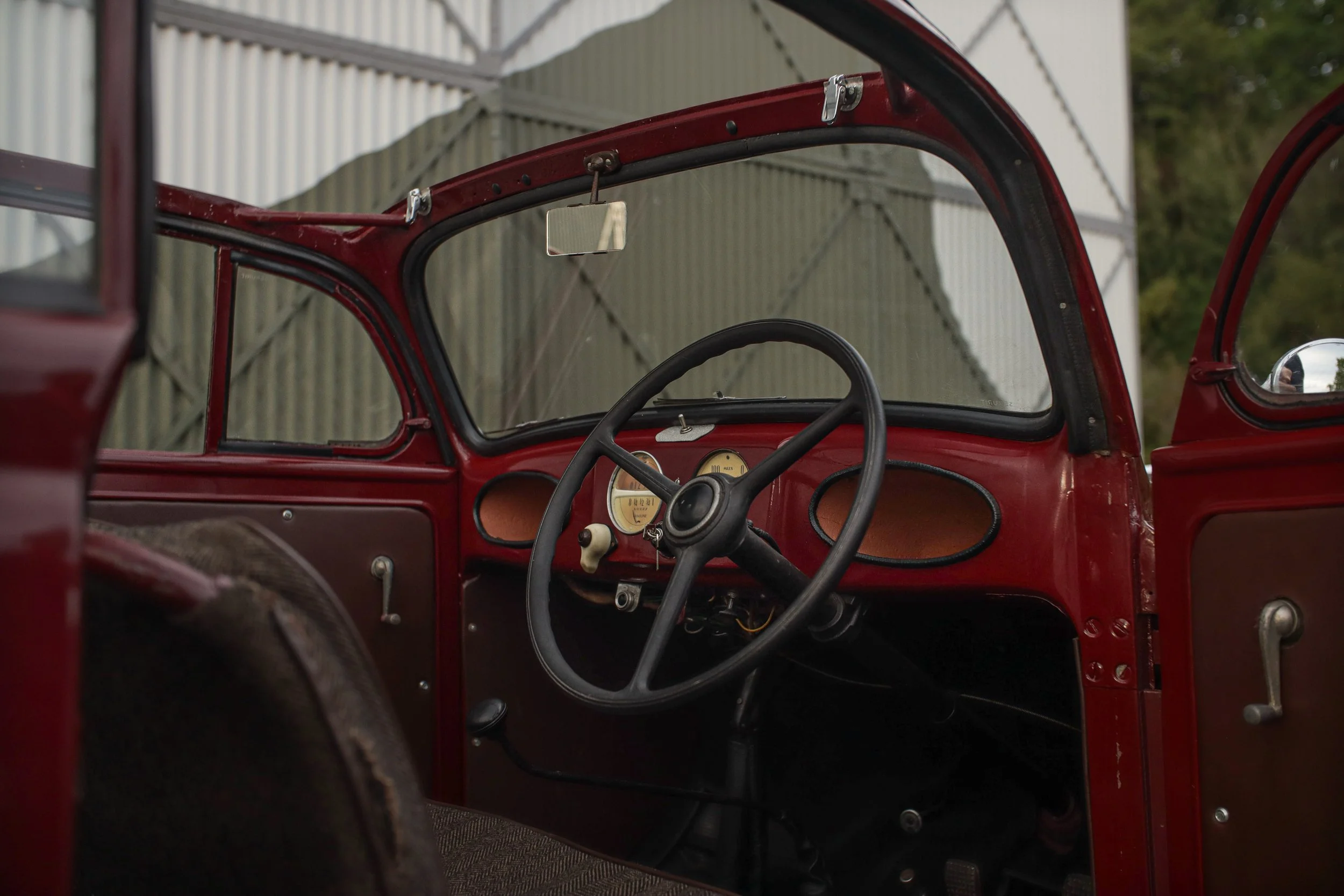
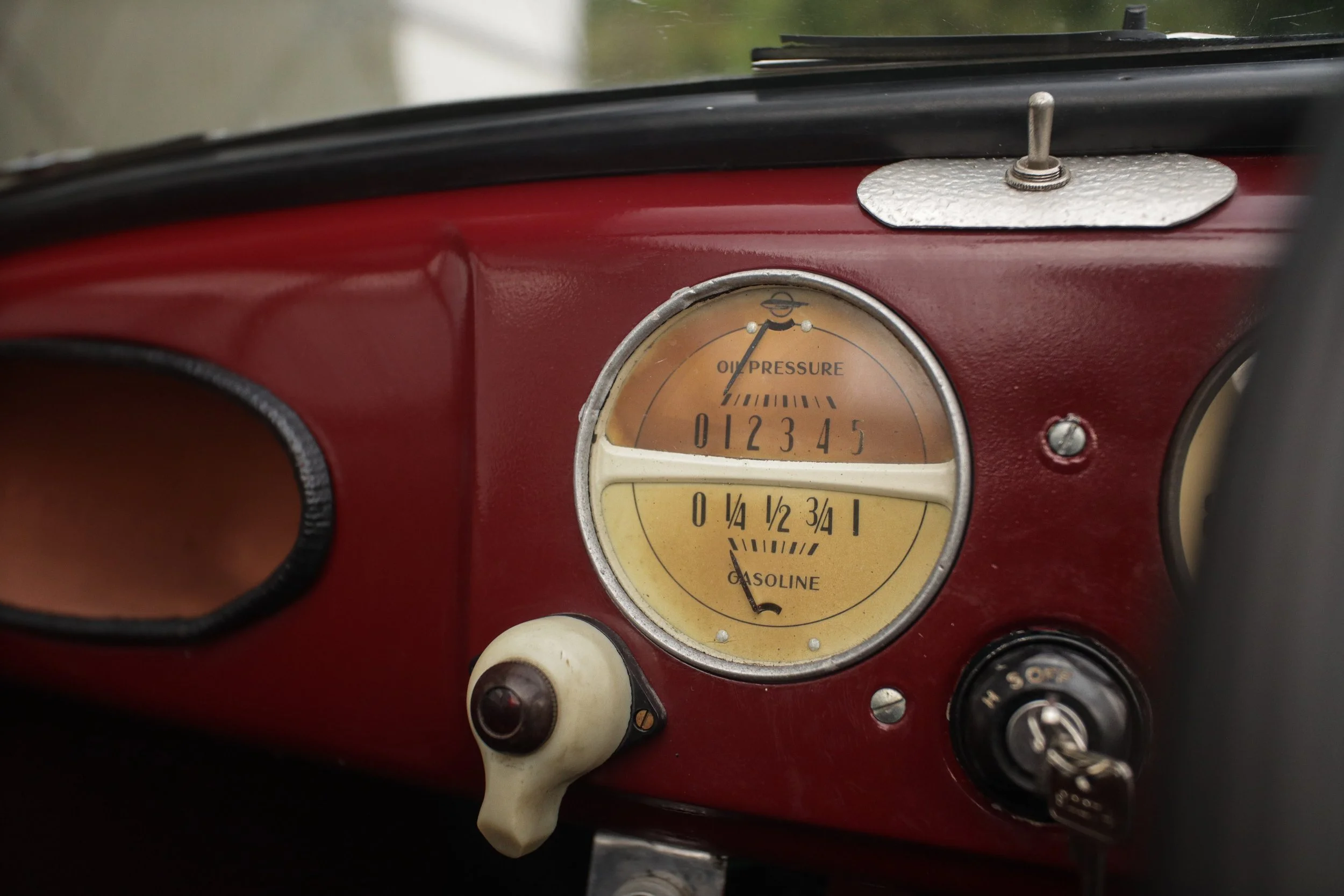
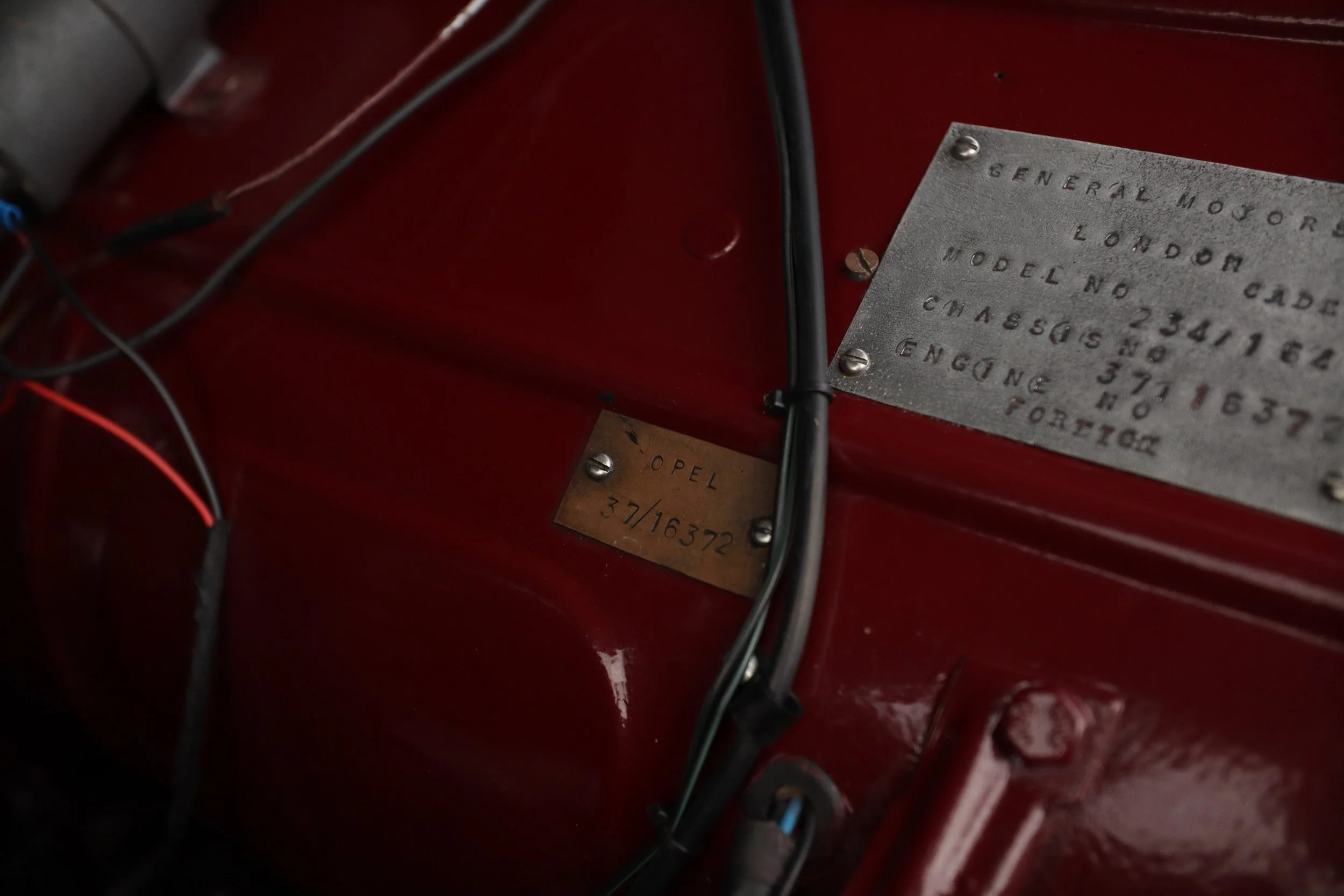
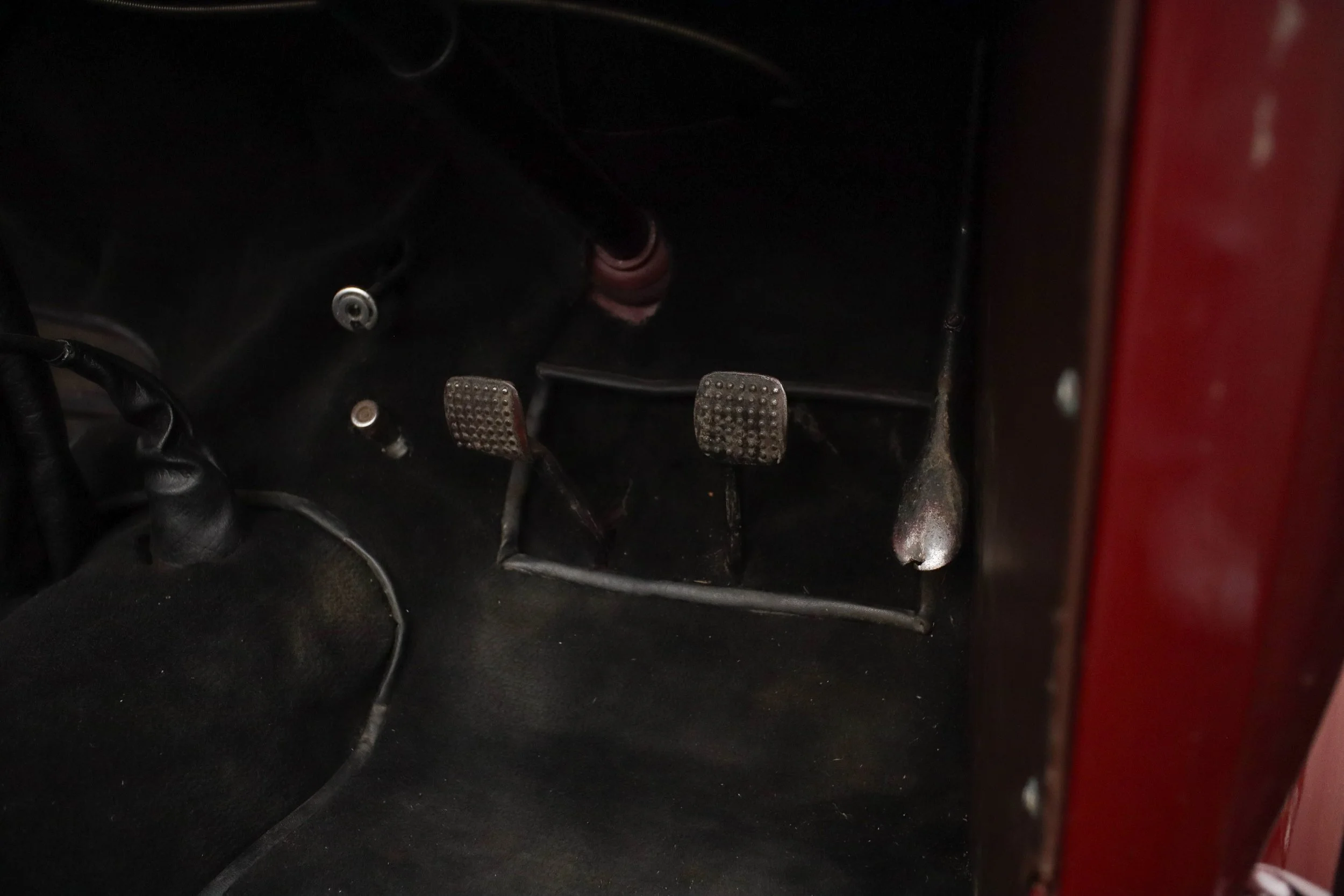
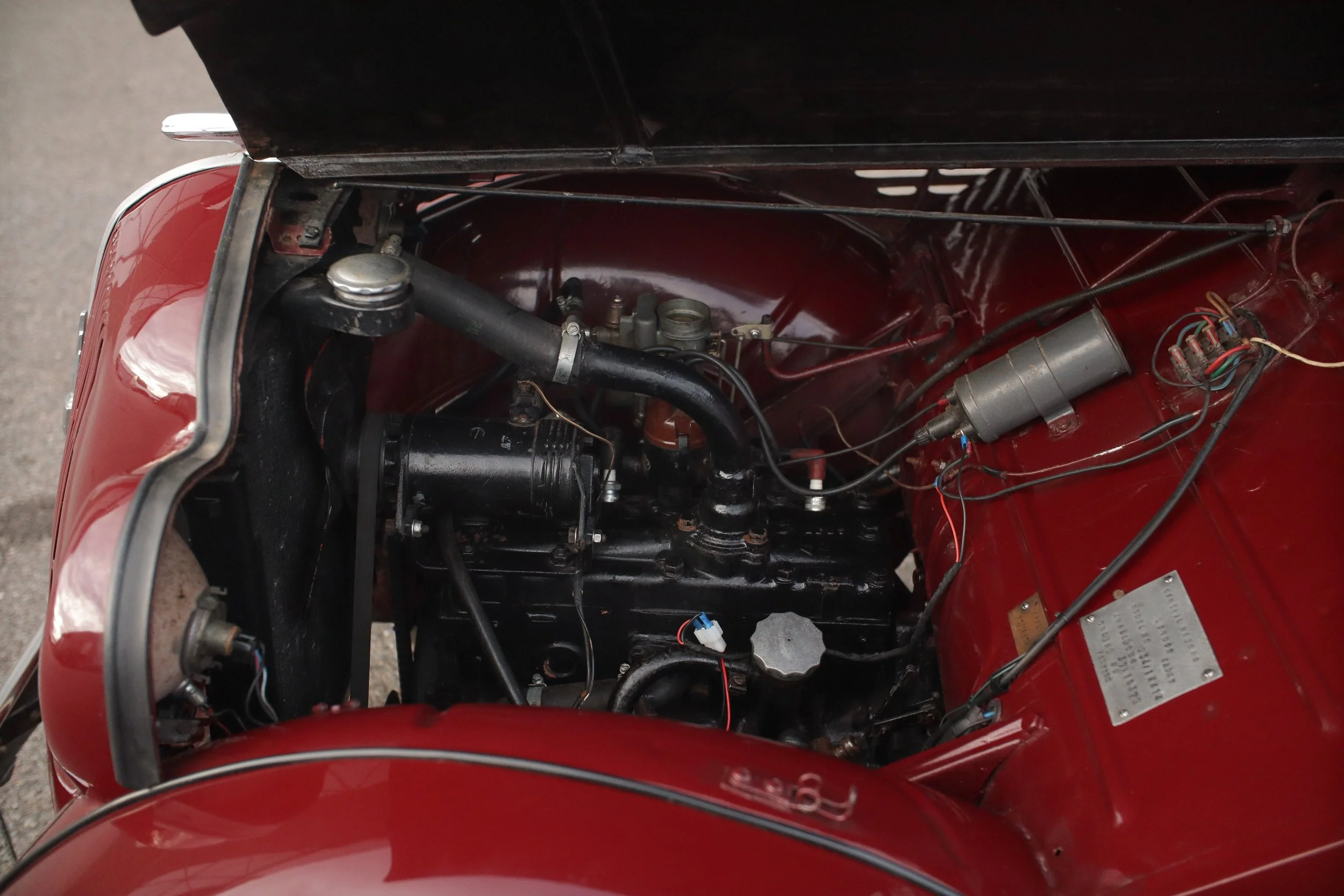

Your Custom Text Here
Registration: VAS 399
After the First World War, Opel revolutionized its Rüsselsheim factory by adopting a Ford-style moving assembly line and focusing on a single model — the Laubfrosch (“treefrog”), a Citroën 5CV-inspired light car launched in 1924. The strategy proved transformative, and by the end of the 1920s Opel had become Germany’s largest car manufacturer.
By 1936, the Laubfrosch had evolved into the boxier P4, which was soon replaced by the forward-thinking Kadett. Developed under General Motors’ influence, the Kadett featured unitary body construction and modern engineering. While mechanically similar to the P4, it offered refinements such as a 1,074cc side-valve four-cylinder engine, hydraulic brakes, and — in Master trim — independent front suspension.
The example offered here is a Kadett Convertible, restored some years ago and since kept in long-term storage. Finished in an attractive livery, it presents very well but, as with all cars that have been laid up, it will likely require recommissioning before regular use. The car starts and runs, engages gears smoothly, and brakes correctly.
Accompanied by a German-language owner’s manual and a Swansea V5 document, this rare survivor represents a charming piece of pre-war German motoring history.
Registration: VAS 399
After the First World War, Opel revolutionized its Rüsselsheim factory by adopting a Ford-style moving assembly line and focusing on a single model — the Laubfrosch (“treefrog”), a Citroën 5CV-inspired light car launched in 1924. The strategy proved transformative, and by the end of the 1920s Opel had become Germany’s largest car manufacturer.
By 1936, the Laubfrosch had evolved into the boxier P4, which was soon replaced by the forward-thinking Kadett. Developed under General Motors’ influence, the Kadett featured unitary body construction and modern engineering. While mechanically similar to the P4, it offered refinements such as a 1,074cc side-valve four-cylinder engine, hydraulic brakes, and — in Master trim — independent front suspension.
The example offered here is a Kadett Convertible, restored some years ago and since kept in long-term storage. Finished in an attractive livery, it presents very well but, as with all cars that have been laid up, it will likely require recommissioning before regular use. The car starts and runs, engages gears smoothly, and brakes correctly.
Accompanied by a German-language owner’s manual and a Swansea V5 document, this rare survivor represents a charming piece of pre-war German motoring history.